Fred Jürgen Rogner | Interview | “From Amon Düül to Digital Art”
Fred Jürgen Rogner has been involved with art for several decades now. His paintings have been exhibited both nationally and internationally, while his career has gone through several stages.
He is an award-winning artist based in Germany. His career began with the informal, then morphed into airbrush realism with a focus on science fiction themes and landscapes. He was also friends with the experimental band Amon Düül and did a lot of artwork for them. More in the following interview.
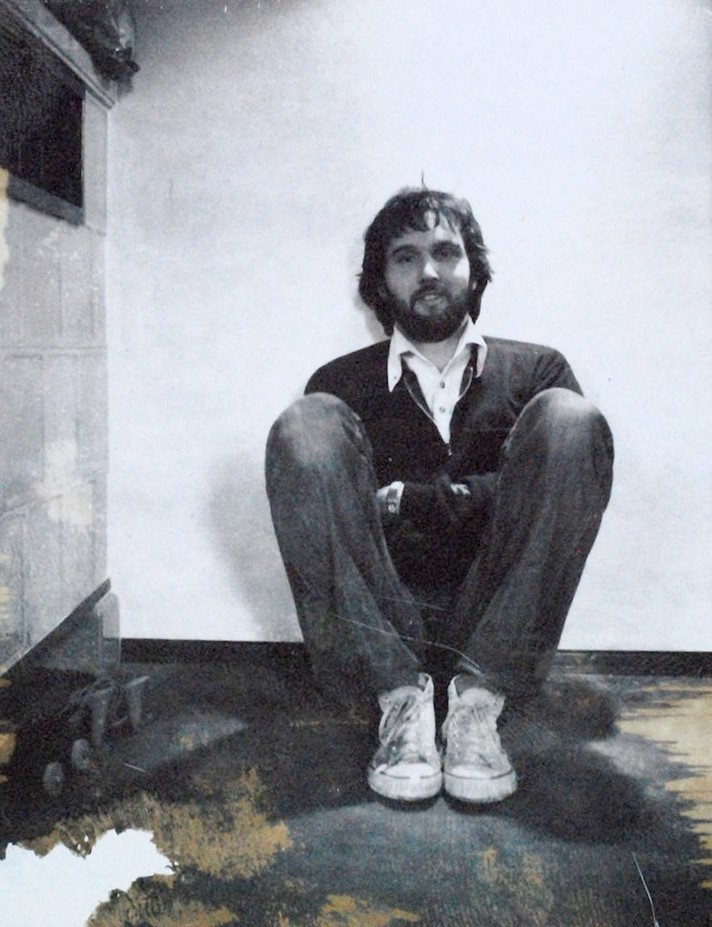
“Go out and look at things, everything!”
What was like growing up in post war Germany? How would you describe your childhood days?
Fred Jürgen Rogner: I am the youngest in the family. There are three brothers. Falk was the sandwich kid.
He was born in 1943, in Liegnitz now Poland, after the war in 1948. My father had survived, despite being an officer in the Wehrmacht for five years. All the other uncles, three of them, in the family died in action, Bernd near Kursk, he was a tank commander, Heinrich in France near Lyon where he died in an ambush.
Uncle Ulrich died in the last days of the war, when the Russians stormed Berlin. He was with the paratroopers, and the youngest only nineteen years. I remember very vividly, that my grandmother, for decades afterwards, was traveling to East Germany (under Soviet occupation) to search for his grave, which hasn’t been found to date. My father was twice wounded in Russia, and after his transfer back from Russia to recuperate, was sent to France where he was captured by the US Army, at the end of 1944. My mother had managed to save the rest of the family, by fleeing in front of the Russian advance from Silesia to the West. With only two days to spare they avoided the disastrous bombing of Dresden in February 1945. After my father’s release in 1946 as prisoner of war, he searched for his family, reunited with them in the West of Germany and continued his studies of agriculture in Giessen, a city near Frankfurt in West Germany, where I was born in 1948. My father became employed at the State Institution Bundessortenamt near Hanover in Northern Germany.
I have tried to lay out the drama of the war years, because I think the time has influenced the family up to today. Being a refugee! I think it has influenced Falk’s work and I am quite certain that it is still being reflected in my work, on many differing levels.
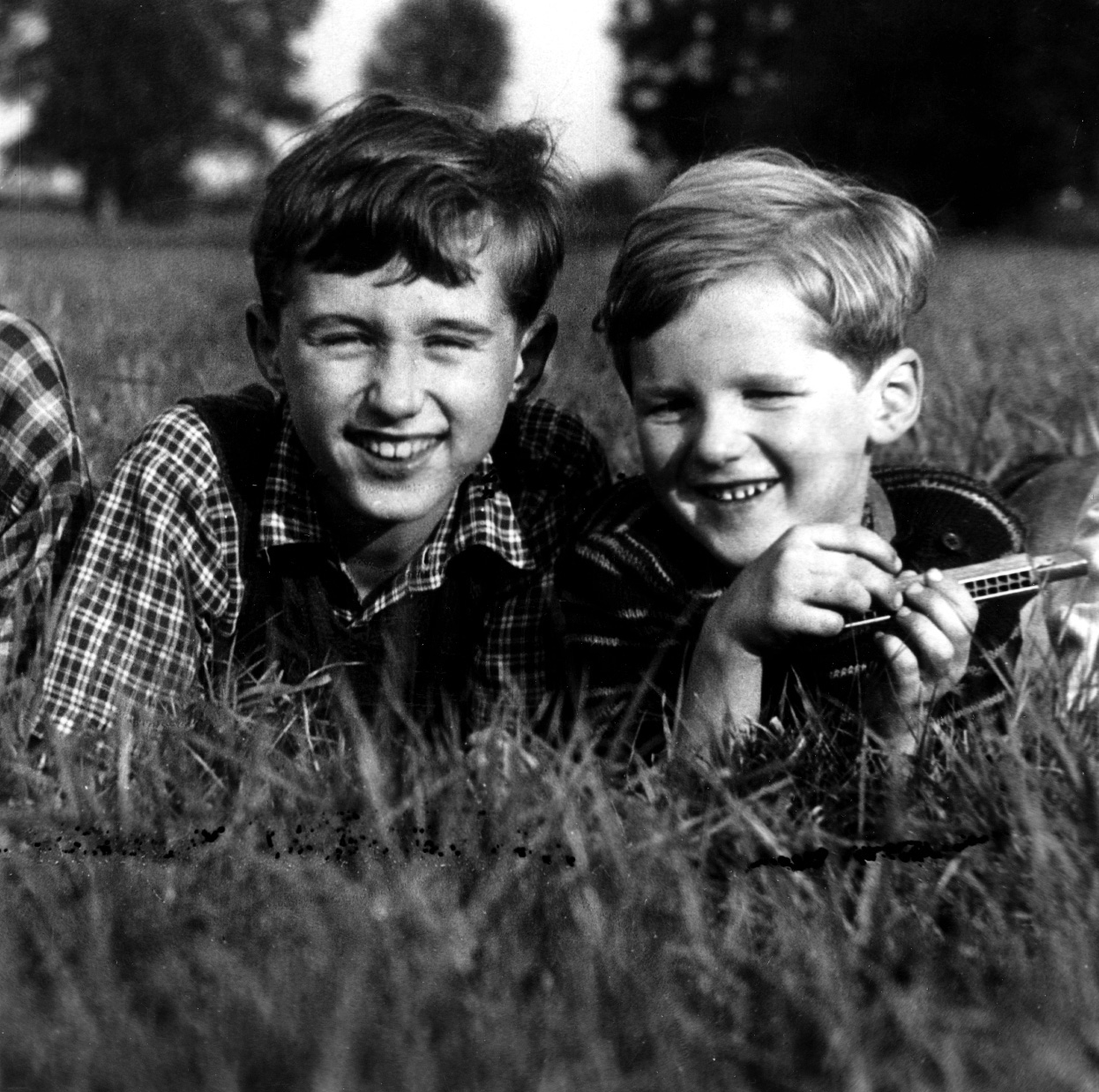
As William Faulkner says: “The past is never dead. It’s not even past.”
The war is still with us in Germany – it is part of family histories and it is very much untreated territory in many respects. It hasn’t been really part of our after war literature or the arts. What happened during those years is still absolutely unimaginable and it has us all in its grip.
In 1957 my father was offered the position of Chief Agronomist, at the Gezira Research Station, in Wad Madani, Sudan. After all the drama of the war years, it was an offer he couldn’t resist. Sudan had become independent in the year 1956 and the new government needed experts to sort out their capability to feed the nation. My father was one of them. He travelled widely in the then wild and peaceful country, taking lots of photos for scientific reasons of endless fields of cotton and durum wheat. But he was also fascinated by the people he met while traveling and took photos whenever he could. The tribe structure was at that time still fully intact. The family was able to travel for visits. Once a year we could stay for several weeks, around Christmas. I even went to school there for almost a year, before I was sent back to Germany to boarding school in Bavaria. I have fond memories of that time.
It is absolutely clear that this move had a big influence on the life of the whole family. My father skipped the dull and secure life of a civil servant in a German provincial town, for the uncertainties of life in an “undeveloped country” in Africa.
The family was split. The brothers lived with guest families in Germany. As my youngest brother I had the fortune not only of living a life in postcolonial Africa, but my parents also took me on a epic trip down the Nile in 1959. Beginning in Khartoum, at the confluence of the Blue and White Niles, we descended the Nile towards the Mediterranean Sea. At the age of 10, the 3,000-year-old art and culture of Pharaonic Egypt, spread out in the Nile Valley, impressed me to the core. But to drive it further , the journey continued towards Greece, the island of Rhodes, Athens and the Peloponnese, Corfu. It could be that the influences from this trip are still shaping my work.
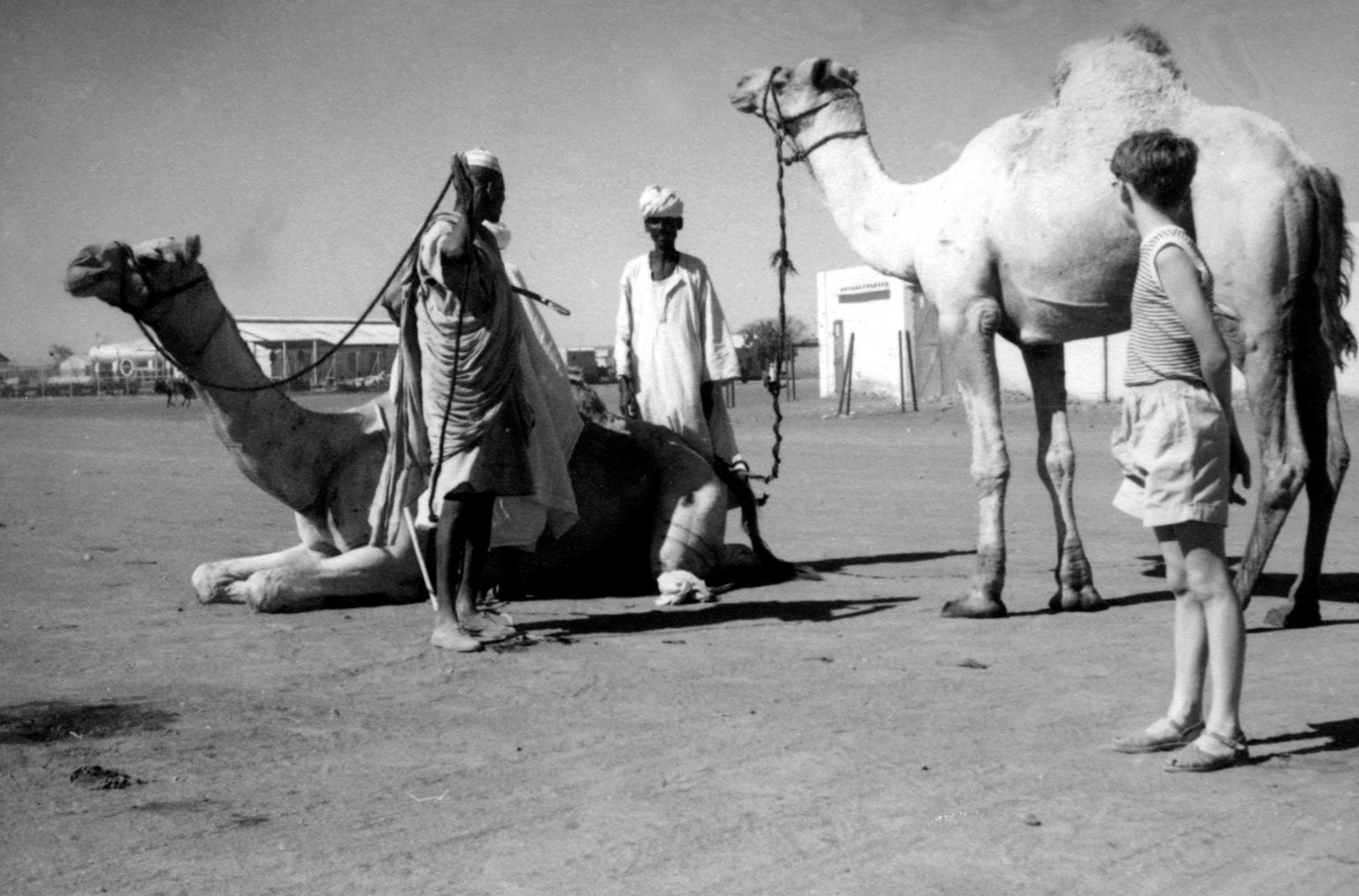
My father went on to work for the United Nations in Somalia, Kenia, Turkey, Iran and Saudi Arabia. On various trips I visited my parents, sometimes in company with school friends. On one such trip I transferred a car to Tehran, crossing through the whole of Turkey. In 1968 I hitchhiked through Spain to Morocco at the age of 18.
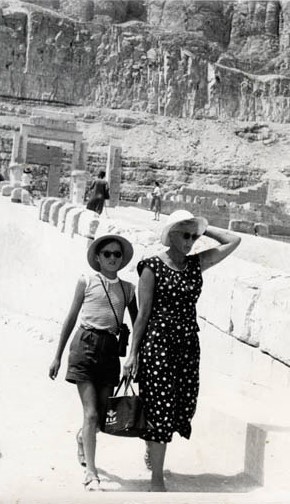
A certain restlessness is already visible.
In 1969 I was accepted at the Münchner Kunstakademie for studies in painting and printmaking. In 1973 I moved to London for my Post Graduate Year at the Slade School of Art.
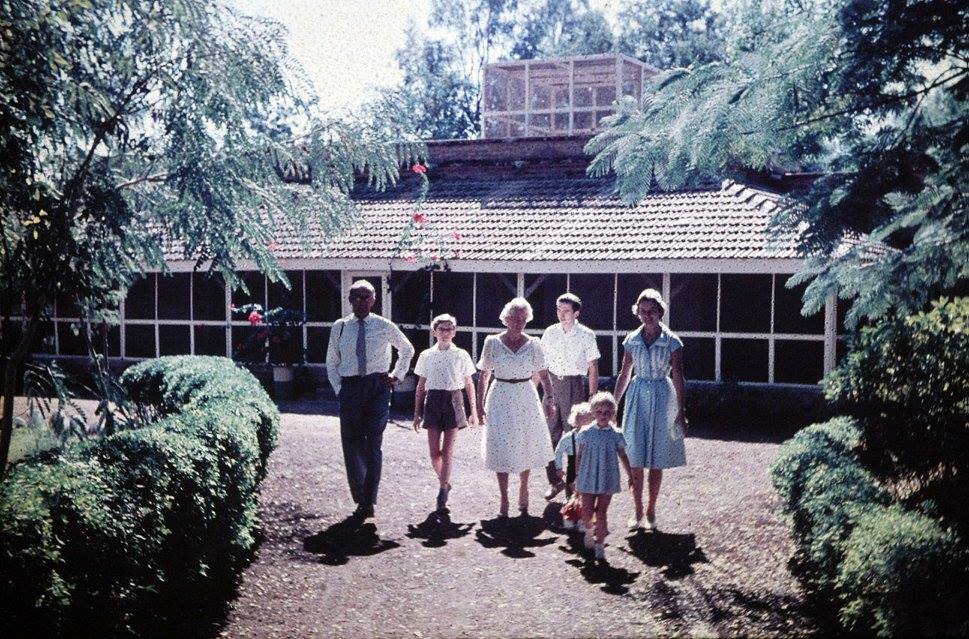
You had a brother with similar interests as you. Would you like to recall some of the early days of hanging together? What influenced your back in the early 60s?
My parents realized that in the long run the family needed a base. During a holiday the whole family went to Bavaria and Austria and my parents decided to buy a plot for the building of a family home. It was situated near Füssen, not far from the border to Austria in an area that is called the “Allgäu”. Take note! The Allgäu will be an important location, when it comes to the origins of Amon Düül.
So the family was drifting to the South of Germany. My two older brothers were already there. One had taken up studying law in Munich and Falk had joined a college for musical education in Marktoberdorf, about twenty kilometers North of Füssen.
I followed suit. I was on my way to boarding school in Hohenschwangau at the feet of the Fairytale Castles of King Ludwig II. I can still well remember my flight from the Sudan into the freezing winter in Bavaria. The drive from Wad Medani on desert tracks to Khartoum in the open Land Rover. Flying at that time was for most people a fairytale. For us it had become almost routine. One of the legendary Douglas DC 3 took me to Wadi Halfa. Down in the desert I could see the railway track that the Sudanese Airways pilot was following, the track that the British had built to quell the Mahdi’s uprising only fifty years before. We refueled in Wadi Halfa, a shed in the desert and petrol drums on a lorry. A little stone pyramid next to the runway told of the things to come, because the Egyptian border only lay a few kilometres away. Next stop was Cairo where I boarded a Lufthansa Super Constellation to haul me over the Mediterranean to Athens. As a kid traveling alone I was especially cared for, but the nice stewardesses couldn’t do anything against the turbulence that did hit the propeller driven aircraft. So I was relieved, when we, with a stop in Rome, did touchdown in Munich.
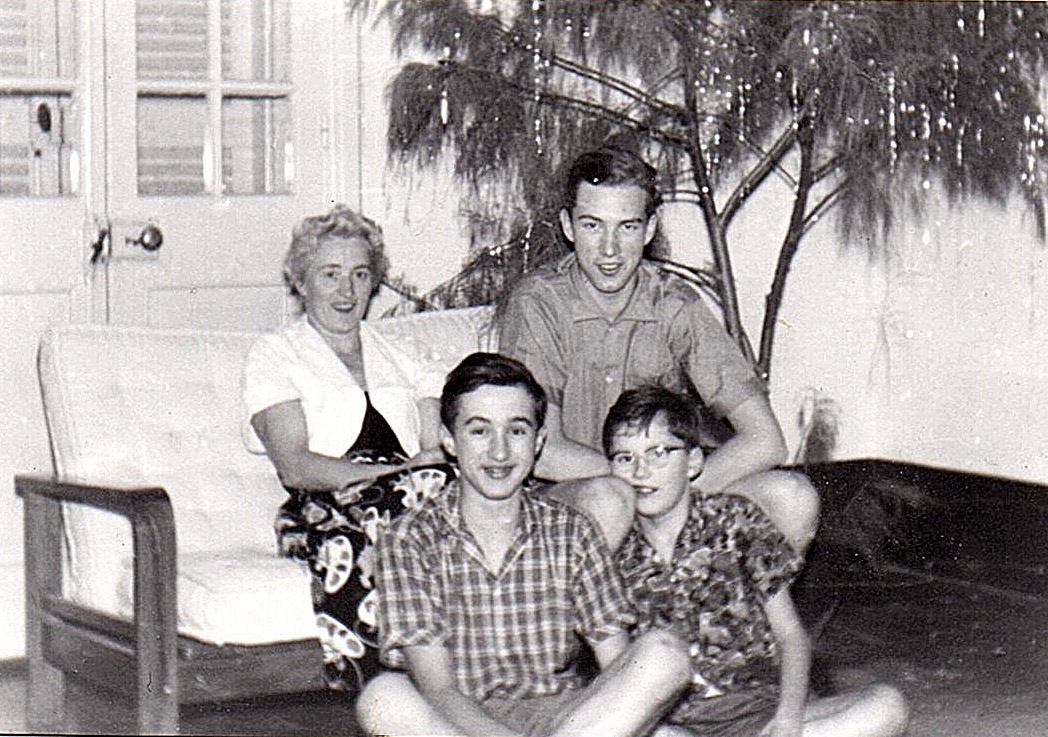
I was to start working on my academic career in the “Naturwissenschaftliches Gymnasium” with Boarding School. At that time I didn’t have much contact with Falk. There were the holidays and the weekends, where we met, and there was music playing in the long Winter evenings in the new family home in Weissensee with the mountains of the Alps very near. There was Beethoven, Bach and Schubert, music I had become familiar with already during the African Nights when the cycads were singing outside. At some point there was Bob Dylan’s ‘The Times They Are A-Changin’.’ Remember Falk had joined this Musical College. There were influences from there and that was also the place where he met Chris Karrer and Peter Leopold. But apart from the music, Falk was an artist. He painted great pictures – mostly near abstract landscapes. Many of these paintings ended up on walls in my parents house. As being the elder brother, Falk had an influence on me. He supplied me with books and I think that through him, that I came in contact with “Beat Generation” literature. As I have been starting to do my own drawings influenced from numerous sources, a strong influence being at that moment in time were the tachistic paintings of “Wols” and the drawings of John Lennon. There was a new tide of art and “Zeitgeist” streaming in with the music.
I was terrible in most school subjects. “Naturwissenschaftlich” meant chemistry, physics and math, all poison for me. I worked for the School Paper, doing all the art and illustrations. We had a film club running. I was active in the theatre group. We created huge psychedelic paintings for the “Fasching” parties, to my designs. The teachers said I wasted my time not doing my academics. They were impressed though with the drawings and diagrams I did for biology classes. The art teacher at least was pleased with what I was doing. I was a good athlete and became champion at high jump for the district.
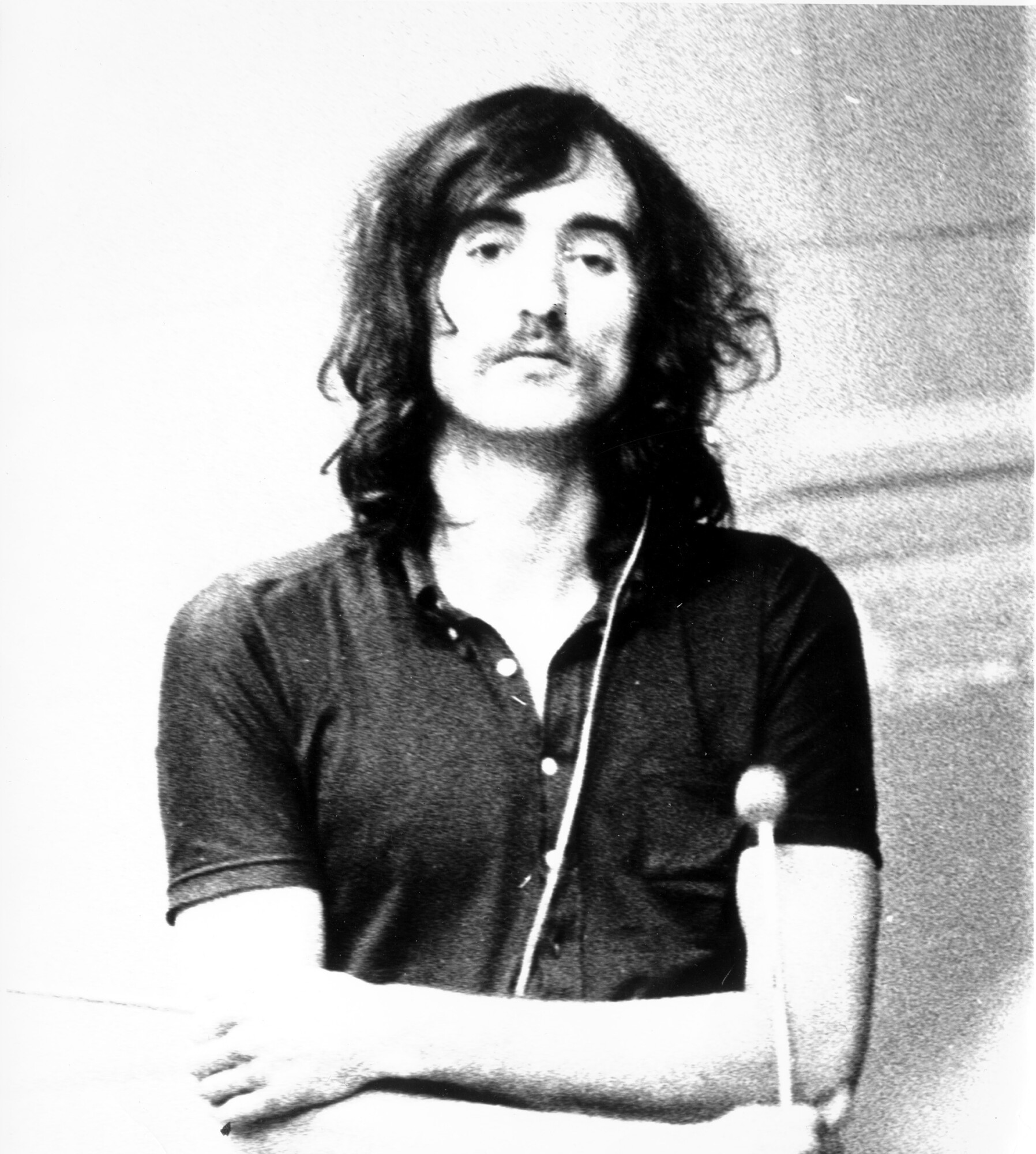
In June 1967 we had our school swimming championships and it was the same day that ‘Sgt. Pepper’s Lonely Hearts Club Band’ by The Beatles came out. I sneaked away and bought myself the first LP ever and we played it that evening back and forth.
Over the years in boarding school friendships had formed and notably one which in our class, that was called the “Triumvirate.” It was Jenner Zimmermann, making later a life as a photographer exploring India from top to bottom, now living in New Zealand, John Weinzierl better known as guitarist for Amon Düül II and last but least, me.
We three were almost always in the midst of all mischief. John had formed his own “schüler band” with a few other guys from school. They used to play concerts at school occasions and were famous for their rendition of ‘(I Can’t Get No) Satisfaction’ by The Rolling Stones. One of our friends from one or two classes up, had a battered up beetle hidden at a garage in the village, so one evening we had made a deal with Peter to drive us into town, to Munich, which was around 100 km away.
The plan was to visit Amon Düül at their flat at Prinzregenten Platz. It was the flat that they were living in, just at the time when Amon Düül II was thinking of splitting up from Amon Düül. The flat was situated in the same house that Adolf Hitler used to have a flat in at Prinzregentenplatz. I had of course mentioned to Falk, about John’s band activities and Falk had encouraged a meeting, to talk about perhaps joining the new Amon Düül II set up. The rest is history.
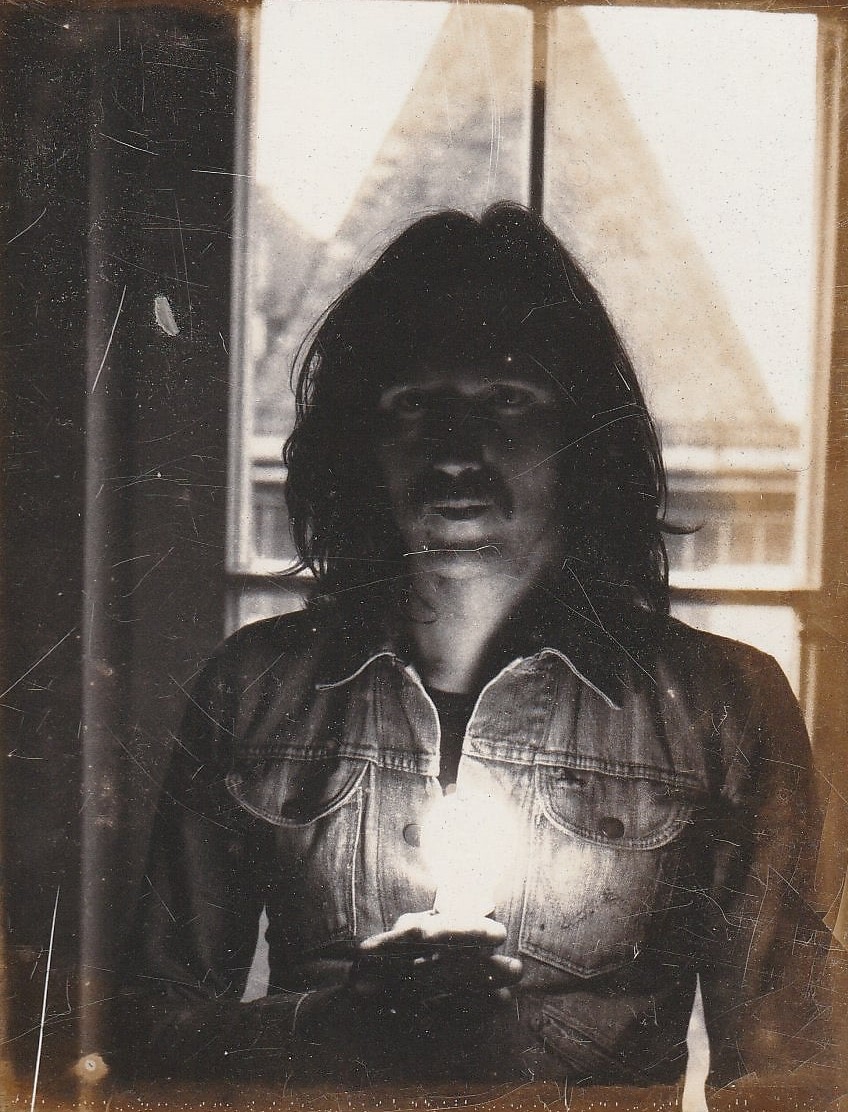
Being away overnight in Munich, had of course a devastating effect on our performance during math and physics lessons the next day.
This shows that fairly early, still being in school the three of us were drawn away from academic life and it started already there in Hohenschwangau. A few months later, with my parents’ approval, I left school, because everybody agreed there was no point anymore wasting my time fighting with teachers. For A-levels I would have had to hang on for another year. Very soon John did leave as well and joined Amon Düül for the life of a musician. Jenner did hold on for his A-levels, but soon afterwards tried his luck as a photographer. He also was active for Amon Düül and lived with them in Kronwinkl for a while. Later on he made a living as a photographer and became famous through the many books he made about India. He is living in New Zealand nowadays.
After I had left school I spent a few weeks in my parents’ house in the Allgäu. I had to put together a portfolio for admission to the Kunstakademie. To pass time, Falk had left me a stack of records. Westcoast american rock like Jefferson Airplane, Quicksilver Messenger Service et cetera and this The Mothers of Invention LP. On one side there was the song ‘Invocation And Ritual Dance Of The Young Pumpkin,’ an endless guitar improvisation by Frank Zappa over almost the whole side. I played the song up and down in time and it contributed to the fact that my taste in music changed from folk with Dylan / DonOvan to more guitar-oriented rock.
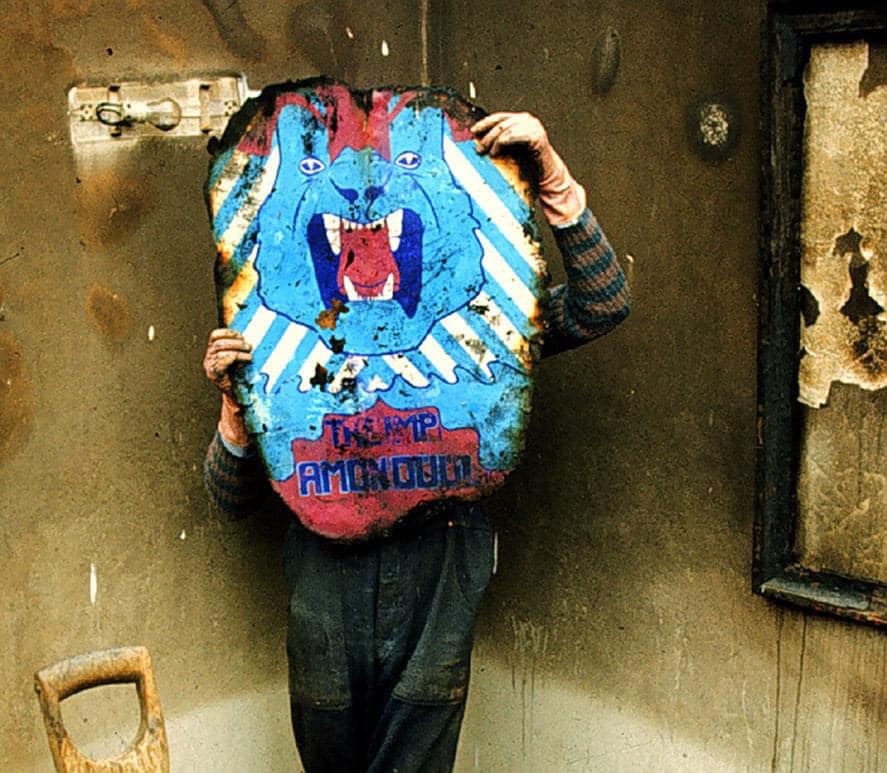
To come back to the question from the beginning, the influences that were around me… Falk was certainly an “influencer” as I mentioned before, but not in the sense, you should study Picasso or the Impressionists. Go and read William Faulkner or Allan Ginsberg. No, he set the example to be creative. He did paint very well. He was very much into literature. Always came up with incredible books. He had joined a special book club for that. He started with photography. Ironically he borrowed the Contaflex camera from me that my father had given to me and it was annoyingly lost in the turbulence of commune life. He even tried his hand at sculpting.
When I had left school, there were obviously discussions – what now? I won’t sit in an office and I don’t want to be bossed around, so let’s go for something creative, something that interests me. I didn’t have a clue what I was talking about. Nobody around who was making a living, being in the arts. I saw Alan Aldridges art for The Beatles Songbook, when I was in London, “Swinging London”. There were all these incredible hippie posters from the West Coast of the USA. Maurits Cornelis Escher, Salvador Dali, that’s what I wanted to do – for a living!? My parents were not amused. They knew the bank manager from the local bank very well. In the end the compromise was, – I would enroll in the Kunstakademie as soon as possible.
The stuff I had been doing in school in the arts lessons wouldn’t be right to present to an examination jury, so I sat down, to do what I was interested in. So drawings, that swung between pop art and the psychedelic. A tutor from a school who prepared students’ portfolios, told me he couldn’t do anything for me. He said I should be fine during the exams – “I should just go out and look at things, everything!” And that was the best advice I got concerning my art education.
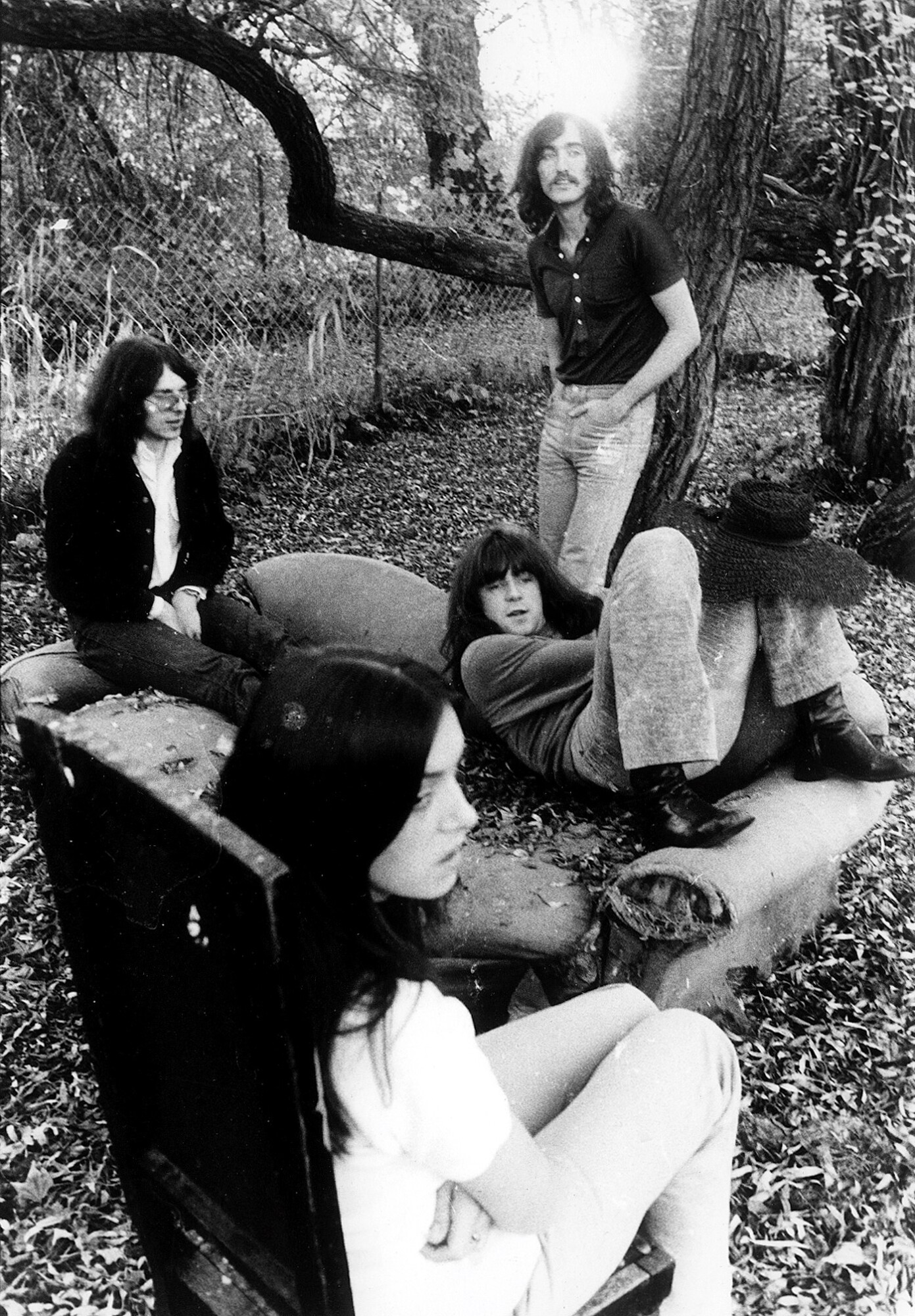
Was there a certain moment when you knew you wanted to become a visual artist? If so, what was it?
As we heard already above, there wasn’t really any family legacy. There was some distant family member who played the violin. For me at least it was not a talent I was born with, no “wunderkind” that amazed its surroundings with being a genius. I think it was a gradual process, which was steered by a few circumstances. Certainly a brother like Falk was helpful. What was apparent from an early age, I could be by myself and occupy myself, for instance with reading a book. In my early school days I read a lot. Everything about the world and the exploration of it. Fernando Magellan, James Cook and David Livingston to name but a few. I wolfed every book down that I could get my hands on. That’s a very important talent to have as an artist, to occupy oneself with a project and stay with it until it is finished. This feeling to sit in front of the empty sheet of paper and there is suddenly something evolving on it out of nowhere. It is also a matter of time. When I think of my boarding school days, the friends liked to sit in a pub opposite and play cards and drink beer – whereas me I was sitting in my room being occupied with a new drawing.
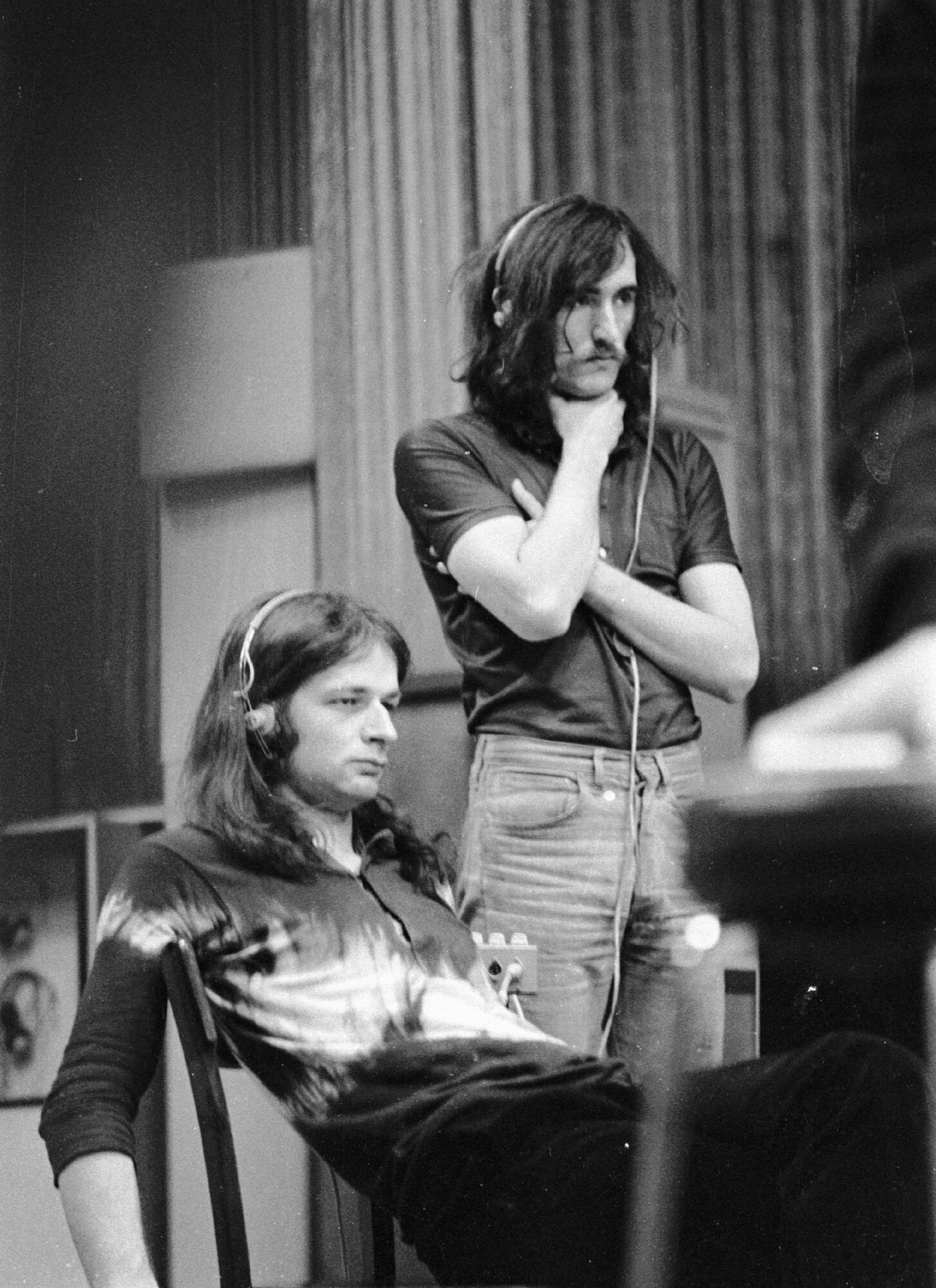
And the sixties explosion came along. Music, poetry, graphics, fashion – at the Easter Holidays 1968 we drove to London. Peter and his battered up VW Beetle were involved again. There it hit me full blast – Swinging London – we stayed in a youth hostel in the middle of Soho and during the nights we joined the underground. Which meant live music and “lightshow” until the early morning. We lived on toast and beans and searched the market during the day for the most outrageous fashion to take home, and shock the folks.
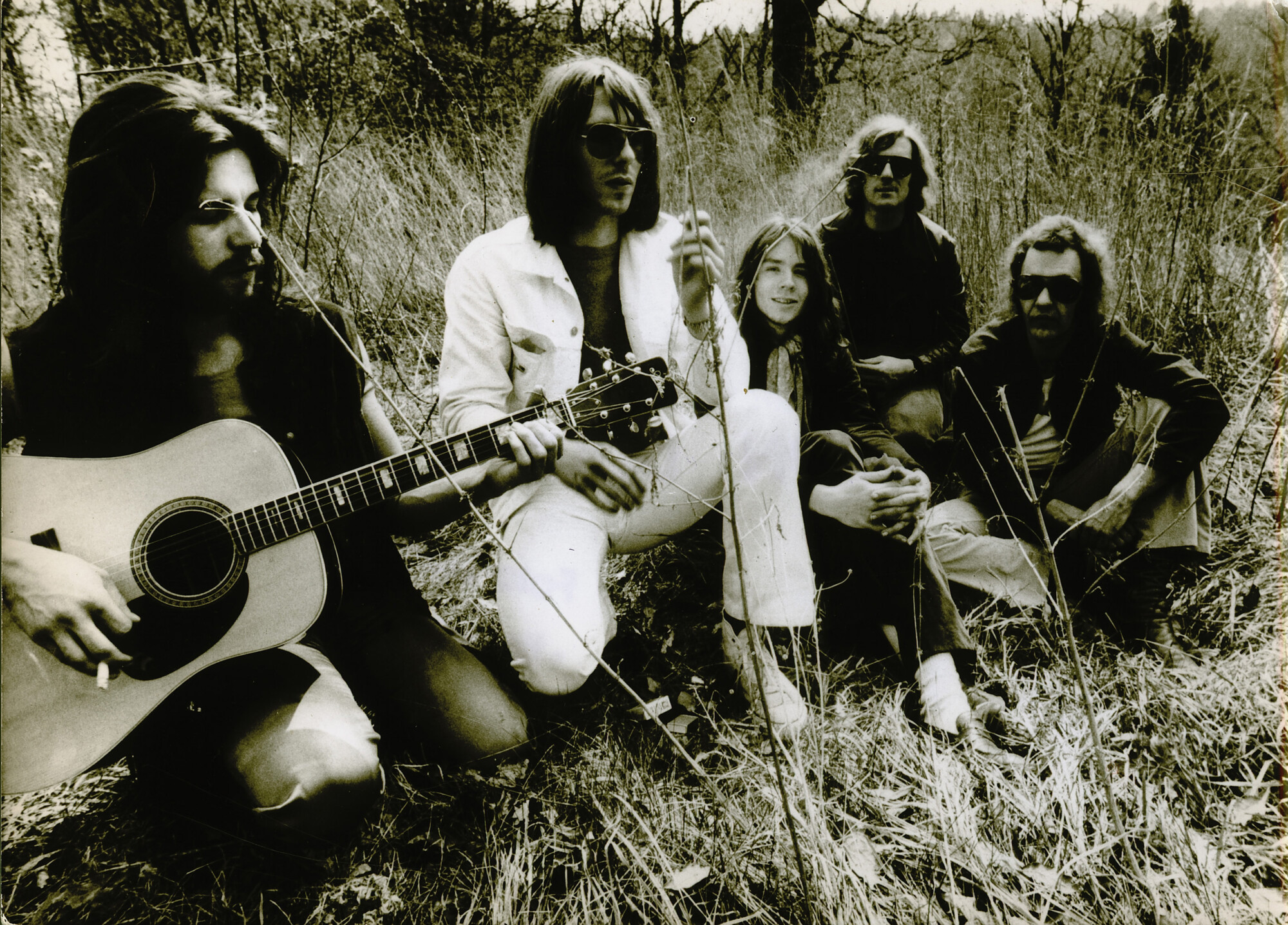
Shortly before Summer I then left school for good, got myself the drivers license and started to repair the Opel Record that my parents had given to me, at the local garage. It needed a new engine. When it was done, it was also clear who would be on board for the journey to the South of France in a few days. It was John Weinzierl, Jenner Zimmermann, Falk Rogner and Renate Knaup, Falk’s new girlfriend and me. Falk and Renate were on board for a mission to explore the possibility of Amon Düül performing at the Arts Festival in Aix-en-Provence. We cruised down the “Autoroute du Soleil” towards Nimes and Aix. Found ourselves a shed in an orchard to stay the night. The next day the farmer passed by to look at what it was all about. When he realized that some harmless hippie folks were occupying his shed, he gave us a nod and asked us nicely “not to burn it down.” He then moved on to his vineyard next door. The next day the sun was shining again, as it almost always was in the Camargue during the summer time. It was time for exploring and a visit to the festival, but on the way, there was a bend too sharp or the car was too fast. Falk was driving, the car overturned and landed on the roof in a ditch. It was a right off and we had one casualty. Jenner had to be brought to the hospital with a broken arm. It was absolutely amazing that there was no more harm done. But my dream of a holiday by motorcar was literally shattered.
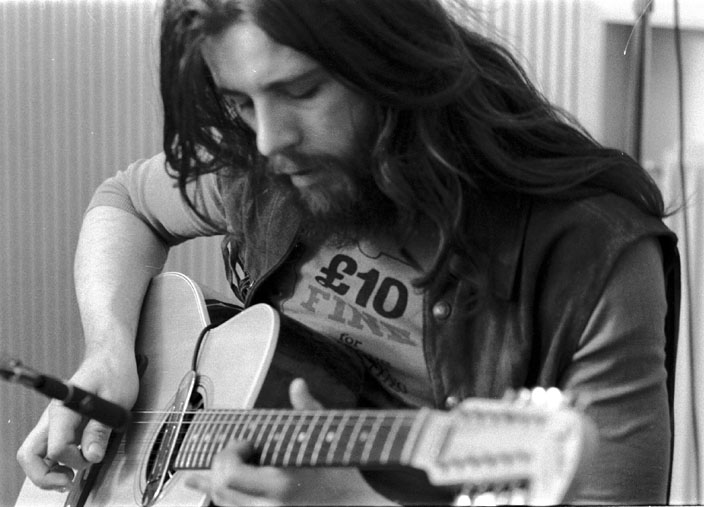
I took my bag and the sleeping bag and continued my journey. I decided to hitchhike to Morocco. John came with me up to Barcelona. He then turned back to Munich for Amon Düül business. Falk and Renate had earlier taken the “Wrack” in a northward direction, but were stopped by the Swiss police, who insisted on driving the car straight to the scrap yard.
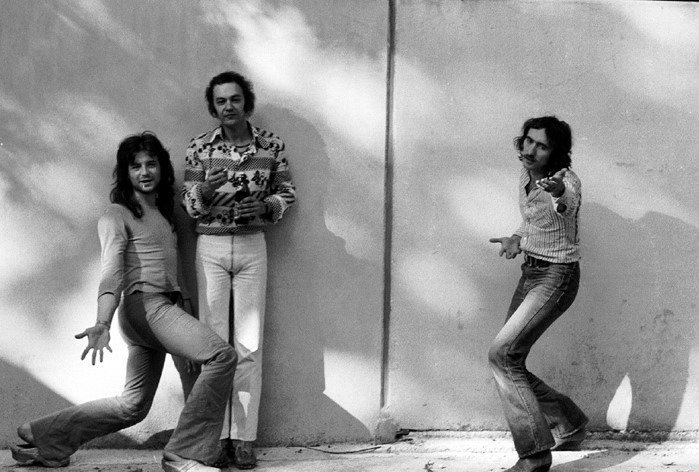
For me about 5000 km lay ahead of me. I reached Morocco alright. I went up into the Atlas Mountains and had a good smoke of the homegrown grass. By the beginning of September I was back in Munich – ready for the entrance examination at the Kunst Akademie. I had had a lot of time on the hike to think of what I wanted to do from now on… I was absolutely certain that I wanted to become an artist.
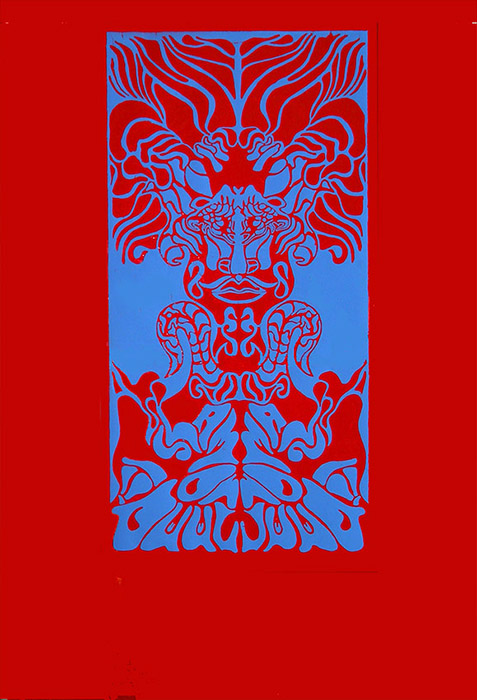
How did you get involved in counterculture and with Amon Düül II?
How I got involved with Amon Düül is already explained in the above chapters. Why didn’t I get more involved with them or why didn’t I join the group to make music? My brother was there, my friends had moved closer and John had become a permanent member.
The whole group or commune were in a state of experiment. The question was, can a group of people from various backgrounds create a force that would stand against the taste of German post-war normality. Could the underground also find a foothold in “Schickimicki” Bavaria? Did I want to be part of it?
I had made the decision to become an artist, to study at the Akademie and I couldn’t see how communal life with all its chaos could go along with a life geared toward a career. Only weeks after being out of school I had commissions to do, an illustration for a magazine. So I knew I had to be able to work toward deadlines.
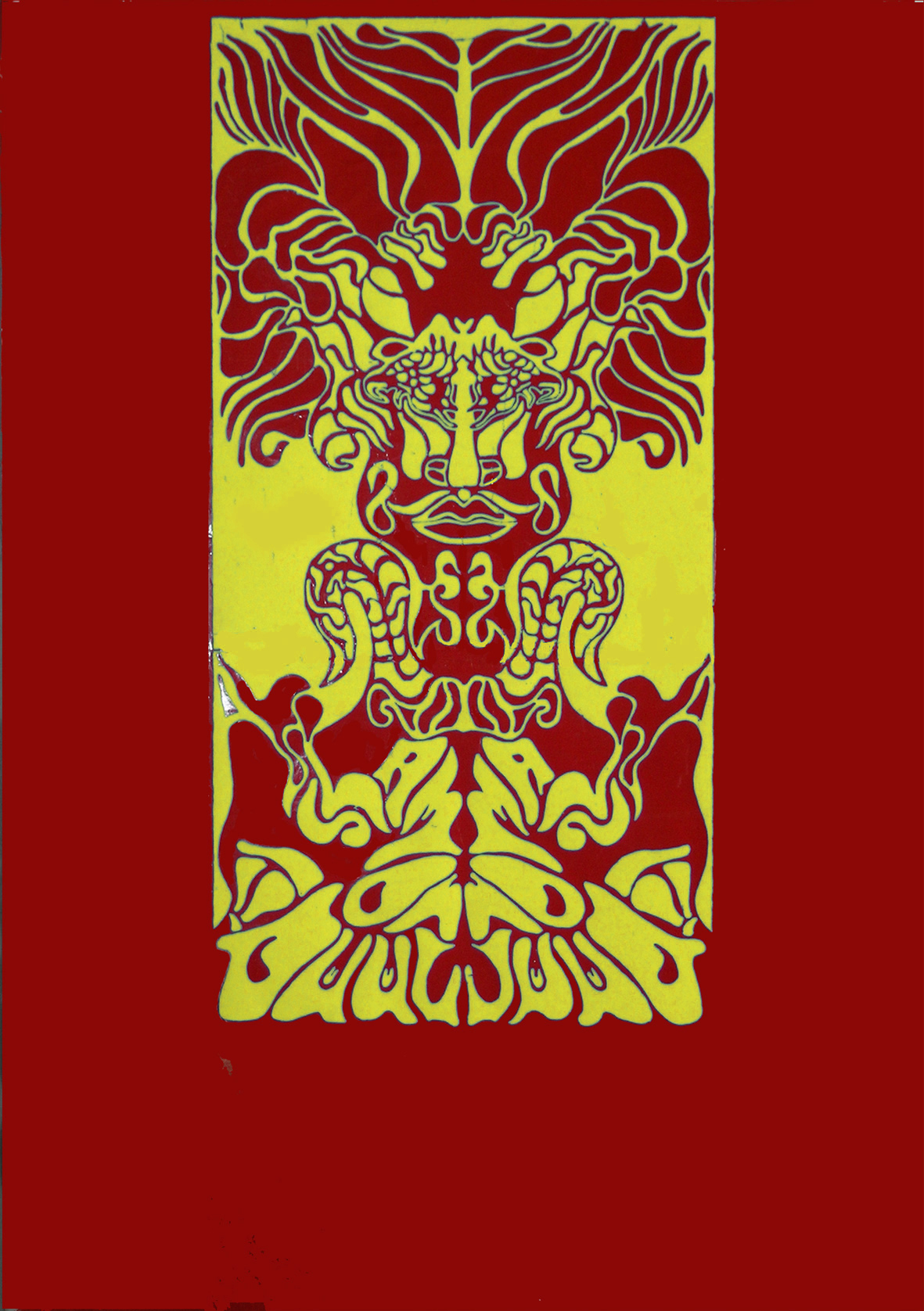
The Düül Juggernaut had already cost me my camera, my dear blue and white Opel Record got shredded to pieces, so better to keep some distance, I thought. But none the less I mingled with them socially. I visited their music sessions. They crashed in for a smoke at midnight or to borrow some money. Luckily I was on my parents monthly paycheck, but for them there were still dire straits. Concerts were just starting for them and the deal for a record was still in the making.
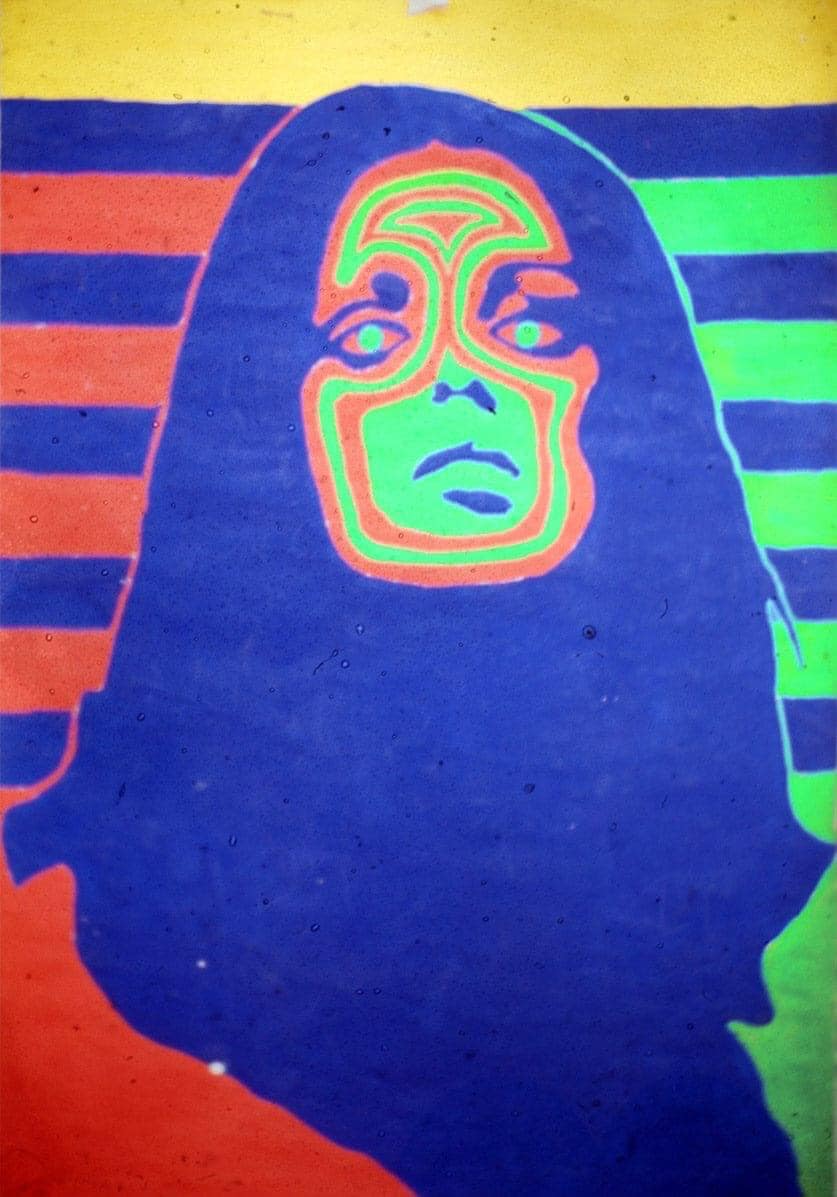
In spring 1969 I had managed to sail through the three day entrance examination of the Akademie. I had chosen to go for the class of professor Karl Fred Dahmen, the most “progressive” class at the Akademie. It was so progressive, that in their class, they had a new examination introduced by the students, for all the incoming new members. The new student had to appear in front of a panel of students for questioning. The night before the important date, there had been a party at our flat in Einsteinstrasse and sure enough certain substances were offered. The morning came and I was still turned on, when I rushed in front of the panel. I was asked, “Why did I decide to study Art?” —- I skipped all fundamental Marxist rhetoric and simply answered, that painting pictures gave me satisfaction – and that was probably the unexpected simple answer nobody expected in those complicated times, when students not only in Munich, but world wide were in revolt against the establishment. The Akademie in 1969 was in turmoil, because there were more important things to do at that time, like ending the war in Vietnam, than decorating a corrupt society with nice pictures. There was this simple mind in front of the panel now, who just wanted to do the latter. I also jumped over that hurdle, half stoned.
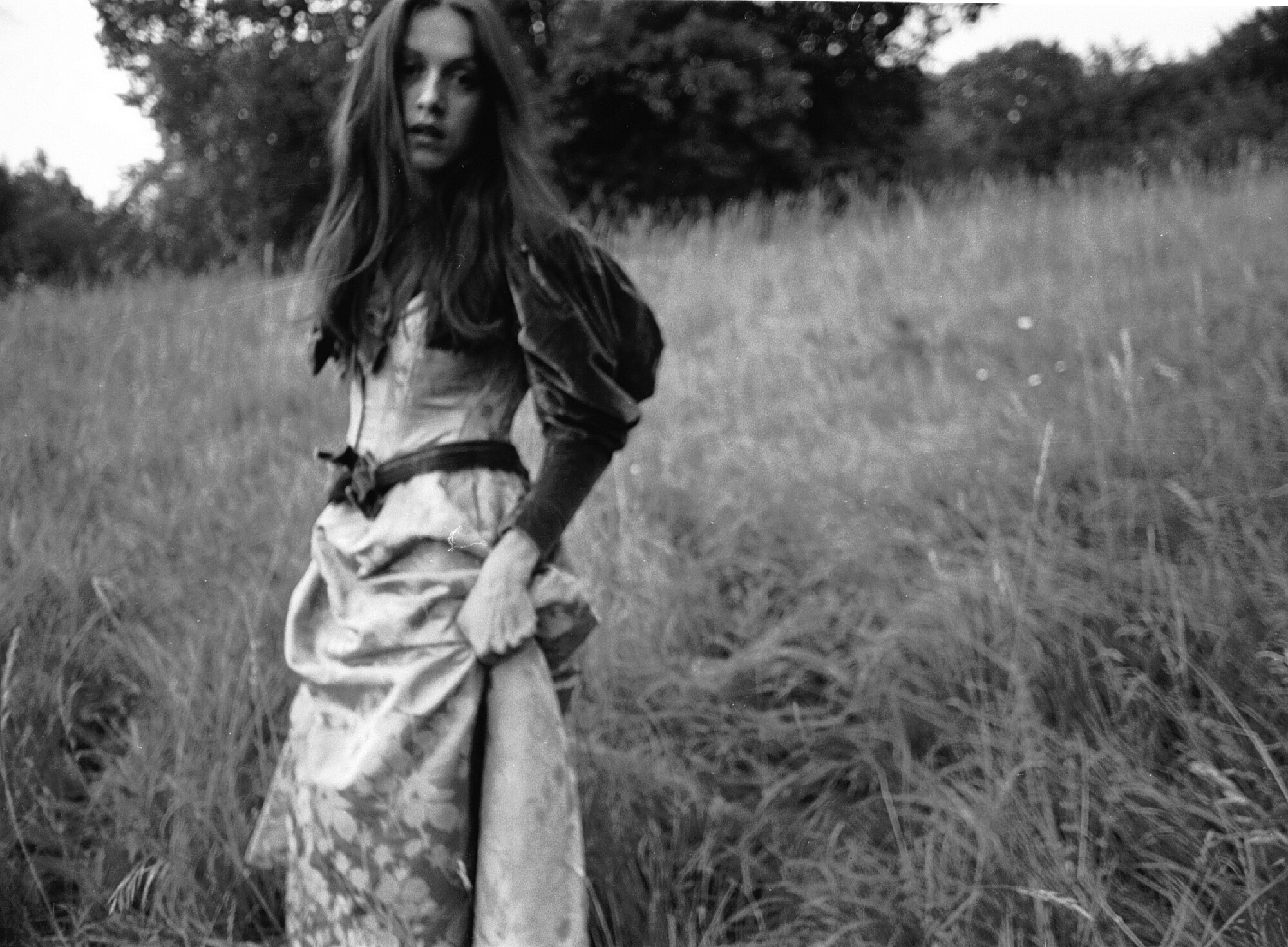
As soon as all the bureaucratic claptrap was out of the way, we could get down to the business of really saving the world. For Amon Düül the first concerts were coming up and I was asked by them if I could help on the promotional side. Posters were needed. I had of course discovered the silkscreen workshops in the ground floor of the Akademie building and immediately went into action. I had designed an image. Very much a “west coast hippie” design printed light blue on a red shiny paper. Everybody was thrilled, so was I and also to date it is one of my best designs I ever made. Pure simplicity! So for the time being we had a solution – silkscreen posters on a limited print run – printed in the Akademie silkscreen department.
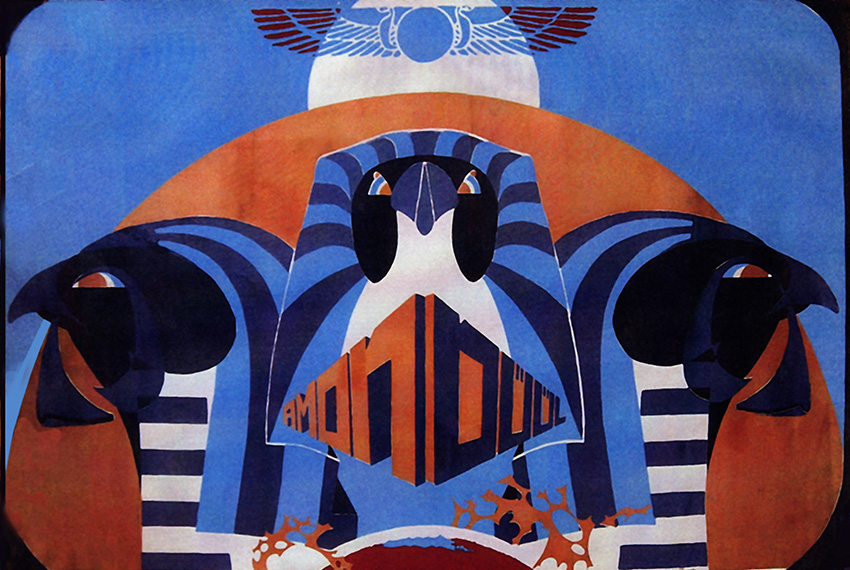
You made so many classic cover artworks. Was ‘Dance Of The Lemmings’ your first?
The first work I did for Amon Düül were the concert posters. These were more or less my designs with Falk as the art director. At that time I was starting to use the airbrush in my work. And it was all learning by doing. For ‘Tanz Der Lemminge’ I did the inside spread, the spaceship cockpit. Falk used his double exposure on almost all covers up to 1972.
‘Phallus Dei,’ ‘Yeti,’ ‘Tanz Der Lemminge,’ ‘Wolf City,’ ‘Tanz Der Lemminge,’ ‘Utopia,’ ‘Vive la Trance,’ ‘Only Human’ – all Falk’s photographic work.
What I did fairly often though is the graphics like the lettering. If you look at ‘Wolf City’ you see a relatively complicated Amon Düül lettering. That is done by me.
‘Vive La Trance’ and ‘Carnival,’ I did work on reissues, like ‘Live in London,’ which I designed completely new. Also ‘Carnival’ and ‘Wolf City’ reissues.
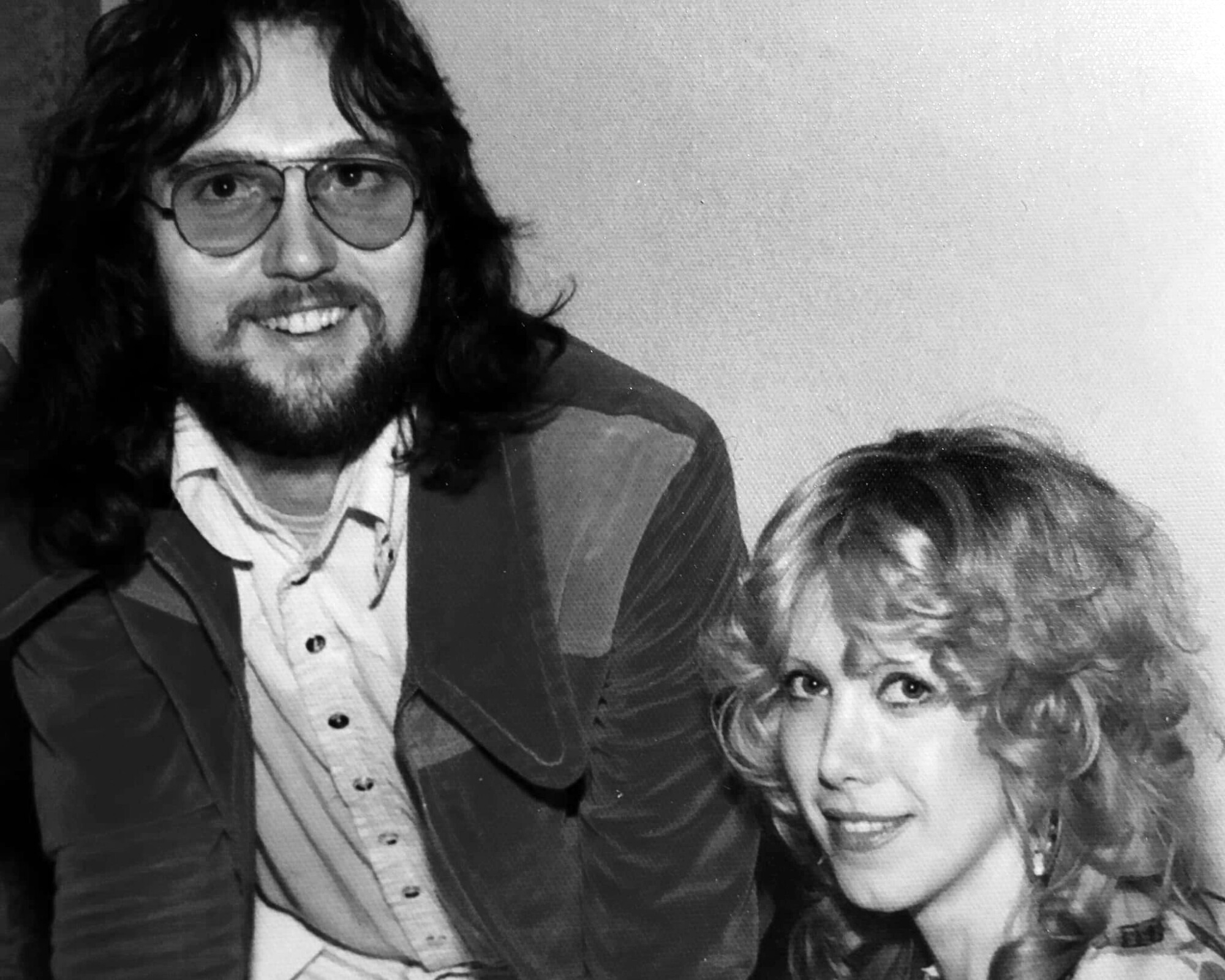
How would you describe your style?
Good question! Normally I would like to answer that one: My style is that I don’t have a style.
But let’s answer this one in a bit more detail. In school I used what was available, pen and ink or for the big paintings of watercolor on sheets of paper. It was partly abstract, with psychedelia mixed in or figurative. Lot’s of skulls, probably due to the age and the life in boarding school. A bit like Basquiat. Over the years my work became more realistic. But always moving between pop art, surrealism and psychedelic art. Because of the surreal element in it, I drifted into science fiction and made a lot of commissioned work for SF Publishers. I moved from Airbrush painting to painted acrylic artwork. Since digitalizing my work in 1996 it is even more varied. In the beginning I relied on photographic reference a lot. Now with the computer I am creating everything in the 3D environment, to then compose it and paint it over digitally. Each artwork is almost composed like an animation, without the movement.
Sometimes I like to call my style Post Modern Romanticism.
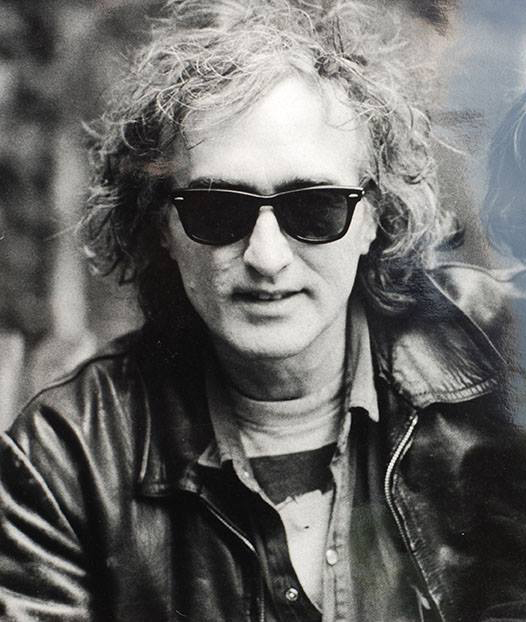
Are you a self-taught artist or do you have formal background/education in art?
I would say both. As you heard I had enrolled at Akademie der Bildenden Künste München, on the ticket, that the portfolio did impress on the examination board. Very soon after admission, things changed considerably. I was now exposed to city life. I could mingle with the underground, if one could call it that, what had formed in a provincial town like Munich. By being at the Akademie I learned very fast that there was nowhere any support of a technical kind, at least one that I needed. At the printing workshops you got good instructions, but on the class level with the professors it was hopeless. They didn’t have a clue. Modern Art was their Manna. The Avantgarde from the beginning of the century was still ruling then as it is ruling now in the 21st century. I had started to use the airbrush in my work. In the 1920th there had been great airbrush artists in Germany, all but being blown away by the war. So I had to look somewhere else or just start with it myself. Learning by doing. At least there was an air brush available in the local graphic supply shop. It became all too clear for me, when I wanted to turn to contemporary issues, I had to find new ways of expression. Even the use of photography at that time in Akademia was a no no. For me, only a short while ago, Tachismus and the Informel, was not fit to describe the Landing on the Moon, the Youth Revolution, Ecology, or the War in Vietnam. Now there were different approaches necessary. We were no longer in the trenches of the First World War. Kandinsky and Duchamp the geniuses from the beginning of the century couldn’t be leading the way anymore.
During the four year at the Akademie I got more and more involved in my commissioned work. I was building my career. The professors equally got more and more annoyed at me scarcely attending classes. But I had work gear at my studio at home. The airbrushes, big bottles with compressed air, a projector and my camera. I couldn’t have all this in the class studio. There was basically chaos in the class studios. The professors are not able to keep discipline in times of student unrest. There were even motorcycle races in the corridors of the Academy. Totally crazy!
So if you look in detail at how I started to create art, there was the Academic background, there was a very well stocked library with all the new art magazines. The print departments as I explained already were great and helpful, but on the business to bring ideas onto the canvas, you were by yourself. How could a guy who was lost in his cosmos of abstract shapes and textures help you or inspire you to tell stories with your art? No “Underground” whatsoever! West Coast Art! You must be joking!
Would you like to take us through different stages of your art? How did it begin and how your interests and style changed during the years?
I had the informal phase when still in school. With taking up the airbrush technique I drifted more and more into realism. Alan Aldridge from the Beatles Songbook fame was a great inspiration in the beginning, but his style was flat and comic like. Looking at hyper realists was more what I wanted to achieve. With the first drug experiences, came the visionary and psychedelic perspective. I discovered the art of Mati Klarwein.
The Diploma Show at the Akademie was dominated on my side by a painting called the Blue Planet. Definitely inspired by the landing on the moon. My rendition of “we are off to the universe” created quite a stir among the modern artists and still does today. I worked on it for almost a year and by doing so taught myself to use an airbrush professionally.
By the end of my studies, all clear of the Academic straight jacket, I was well connected to the media industry. By that time I was ready to leave for further studies at the University College London, Slade School of Art in England, I had a contract with the publisher Goldmann in Munich under my belt, to do three covers per month for their science fiction department. London was waiting.
London was a great inspiration. I started work for publishers like Penguin Books with art director David Pelham. Joseph Beuys had a show at the ICA at the time and I was able to attend his lectures about “Art & Society.” A most memorable experience.
On my return to Germany the real life as an artist got another twist. I got myself an agent who represented me internationally. The Airbrush technique was very much in demand at the time and for several years I also worked for Advertising. It functions as a big further workshop to enhance the quality and perfection of my work. And it brought me into contact with international clients. Invitations to show my work in galleries followed.
As the work became more realistic over the years, I used more photo references. For the figurative work, models were used. When a new painting was in the making, a visit to a good well stocked bookshop was a good way to get inspiration.
What’s the typical creation process like? Do you work on various things or do you focus on just one particular project?
I am working generally on many projects next to each other. That is one advantage of working digitally. You don’t need a huge workspace, but if you would work on huge canvases with all the physical stuff around, you would. If I think of the airbrush days, it was absolutely unthinkable to work on several paintings.
One wants to also think of the environmental side of it all. If I visit colleges in their studio, they normally have a space, where the finished painted canvases are stacked. Many of these painted canvases will never find a buyer, so eventually they will be destroyed or if it goes well, they will be overpainted. My paintings are stored on a hard disc. If a customer has interest in acquiring it or if I need it in an exhibition, it is printed out in the size that is required.
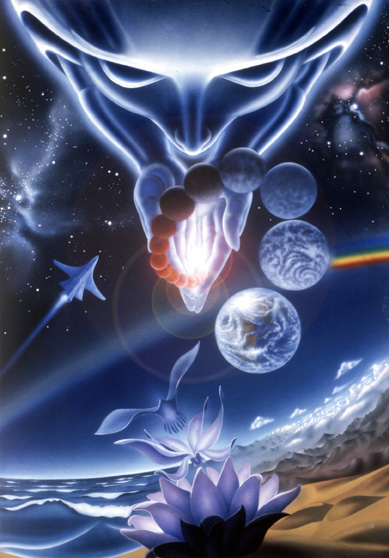
You started to create digitally in the 1990s, what made this decision? Do you feel that it gives you more options?
After I had moved to England for the third time at the beginning of the 1990th the art market that I had been involved with, together with my wife, was beginning to change. We decided it was time to move back onto the continent and it was Berlin, our new place of residence that we did select.
Or you’ll sink like a stone
For the times they are a-changin’
As an artist you experience ups and downs. So it was time to start something new. The people around were experimenting with digital stuff in all directions. There was the internet! Nobody had a clue how to earn money with it. I went to my bank manager, got a loan and went out shopping. What I had learned, it had to be an Apple computer. All artists and designers had one. At the time I didn’t know why, but to the day I am working with one. The computer, scanner, printer and all the other paraphernalia did set me on a digital adventure that is still going strong.
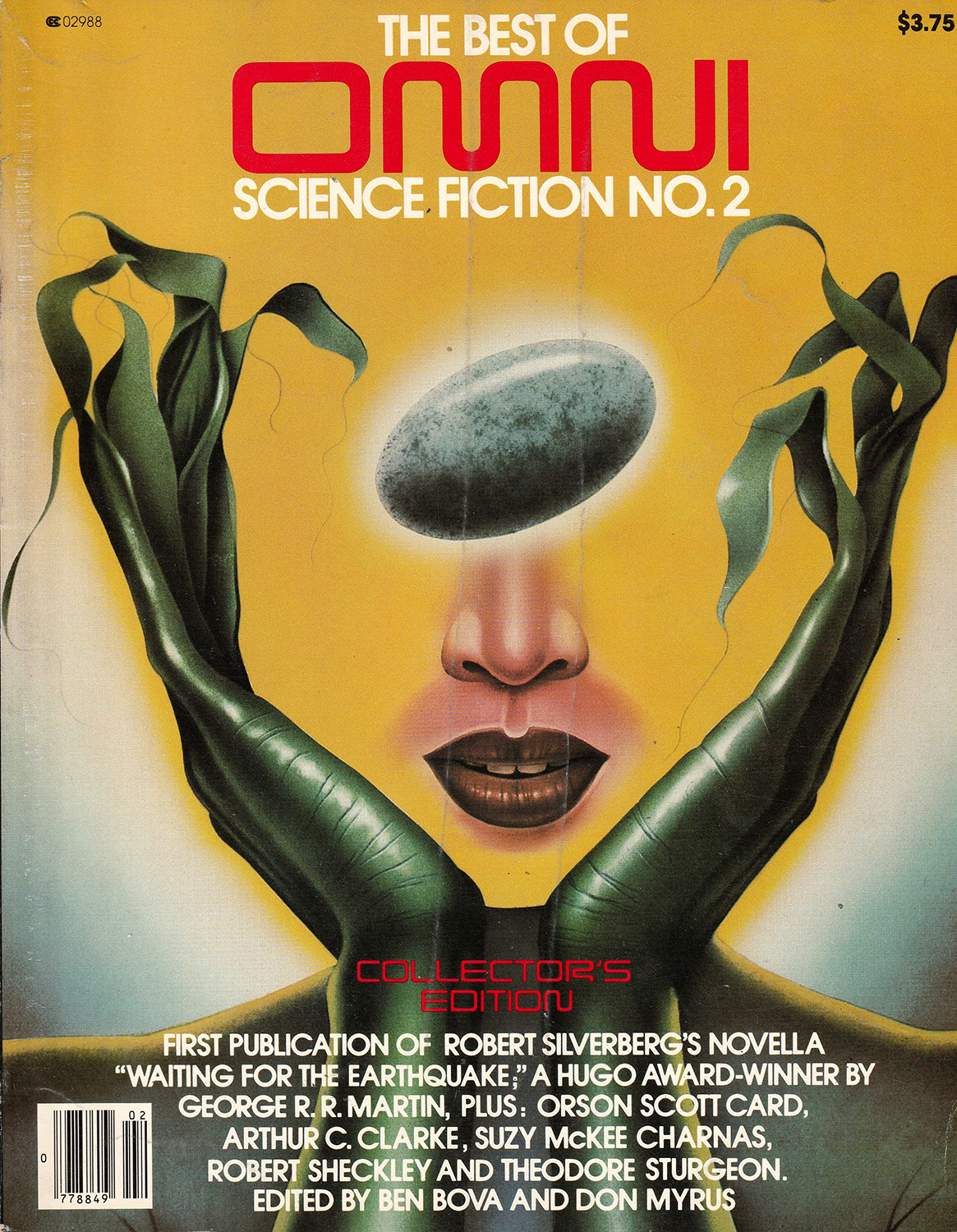
Peter Greenaway said that the computer can be a “paintbox” and that was already in 1991.
First I used the “Paintbox” to go over my traditionally painted work, scanning everything, digitizing and then creating new stuff out of the old. Composing. I had realized that friends were trying out 3D applications. It was a very open and friendly scene where everyone helped everybody. Soon I was experimenting with Bryce, a very primitive landscape generator. But it was lost by the wayside as other applications appeared.
Creating a new image is not much different with a 3D application, than any other means of drawing or perhaps even photography. It is a matter of where you get your ideas from. The advantage of 3D is, you can play around and look at what the computer comes up with. Choose a figure or figures and try out some different lighting. That is already a start that I can work from. You could render a landscape that fits the lighting.
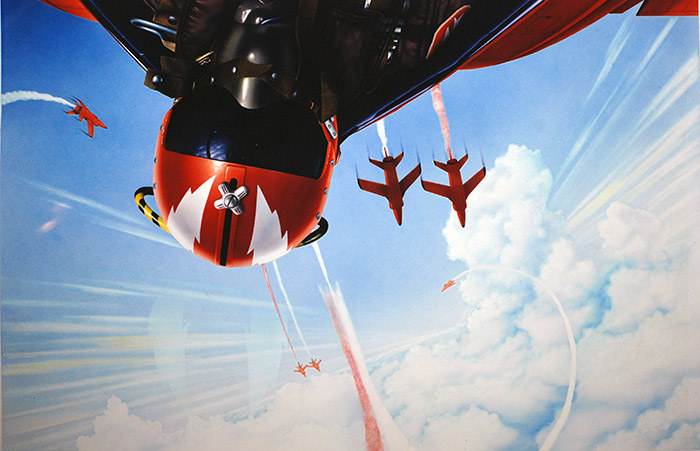
“I am in control of everything, up to the last detail”
As an example we could look at the fairly new “Dawn” image. I wanted to create a follow up to the “Alexander” image. For months I was trying out new battle situations. I had all the figures there from the first painting. I just needed new outfitting and new lighting. The lighting should have been low and dramatic, so every figure had to be worked on. But it was not right. It didn’t have the drama I wanted. When I am working on a bigger project, I always have sideshows running, where I try out stuff which is not necessarily related. But this time I had created a shaman woman figure, very detailed and powerful. I gave it the centerstage of the image and arranged everything behind it. Created a landscape that fitted the dawn mood, with the sun just peeking over the horizon and suddenly the scene was alive. With the introduction of the animals, I moved more and more into an “End of Time” scenario. Mankind’s struggle for survival…
….and after all those years
there is still a yearning in us
for the days when the world was young,
and everyone could roam the earth,
like a god.
I found the quote in Friedrich Hölderlin’s Hyperion and thought it fitted the image very well.
I am not creating images of such complexity very often. But images like “Alexander” and “Dawn” show very well the potential of 3D creations. With the vast library of figures and stills from the first day I started 3D modeling up to the latest acquisitions to date, everything can be worked into any image that comes to mind. That makes all the difference, compared to traditional means. It is even totally different from AI technology. I am in control of everything, up to the last detail. With AI it is trial and error and the computer is dependent on what the internet is offering.
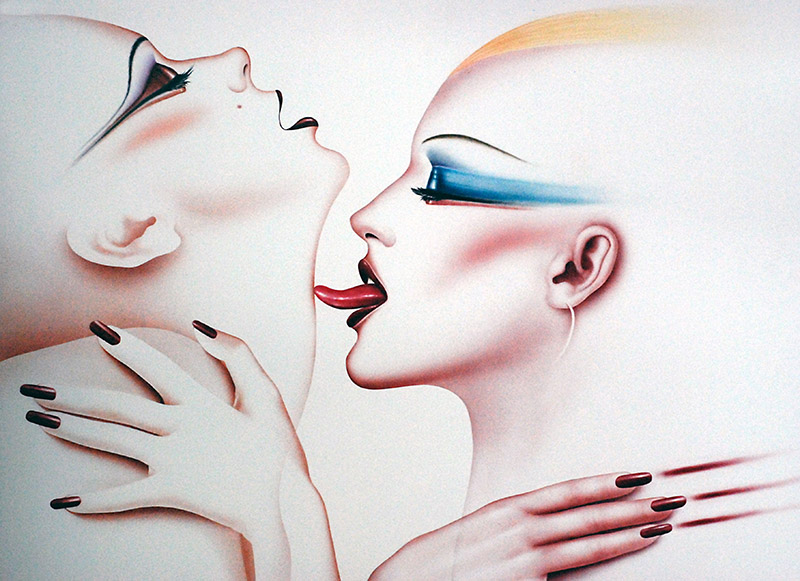
What currently occupies your life?
Concerning my art I had always the aspiration to make a living from it. I saw incredible poverty under the students at the Academy. Only 5% of the students of the arts can make a living out of their work. Normally they end up as taxi drivers or move on to all sorts of other occupations.
I know there is the myth of the starving artist. But I thought that I didn’t want to be part of it. So I made sure that I steered clear of it as best as I could. The art market is a difficult one. Fairly early in my career I got involved with galleries. That was not such a pleasant experience. Although these were successful events, artwork got lost and payments didn’t come or came very late. I made another attempt at the Gallery Art Market when I returned to Germany after living fifteen years in France and England. I made the rounds through Galleries in Munich and showed my work. The response was: “Great Mr. Rogner, thirty times the painting, Potsdamer Platz‚ and we are having a deal.” Yes I know, that’s what builds an artist’s reputation, endless repetition over centuries. You get mad, commit suicide.
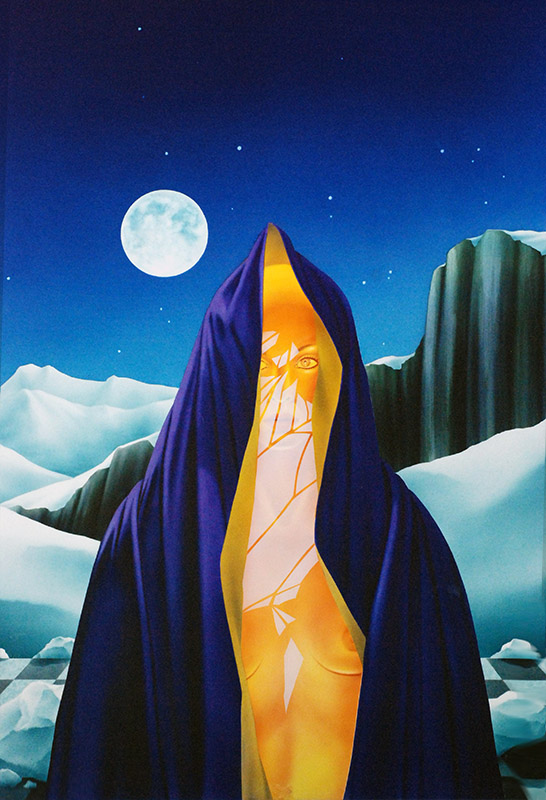
…or you are very successful!
For me it is more “Jack of all Trades,” I have to try out different styles and stories. My style is to not have a style!
My art is available over the internet now.
I have become a member of several Art Societies and participate in their exhibitions.
My interest in art still tends to be figurative, with nature and history as the main subject. With history I also mean art history, with the narrative painters Edward Hopper and Eric Fischl a strong inspiration.
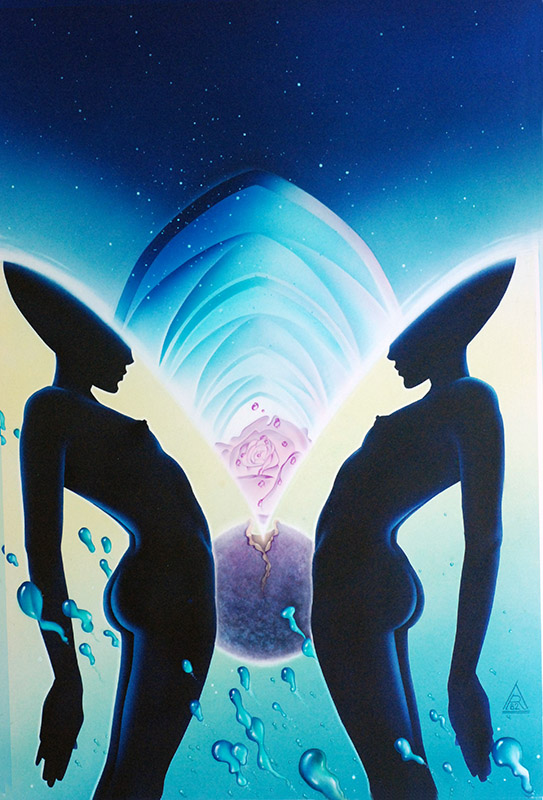
Tell us about Gerhard Mantz. Gerhard had the same approach to his art as you.
When I arrived in Berlin coming from London in 1996, I tried to get an idea of the existing creative scene. I didn’t know anybody, but when people saw my work and realized my attempts to restart digitally, they said to me – “You have to get in contact with Gerhard Mantz.”
Gerhard was a “real artist” with grants, gallery owners and exhibitions. When I first visited him in his studio , he showed me his minimalist sculptures and how he was just starting to create new sculptures in 3D applications. Since we were researching the same programs, we immediately had a basis for a friendship that continued after I had left Berlin behind. Every few months we had an hour-long telephone conference where we exchanged all the news. As Gerhard was very much involved in the technical side of it, calling Gerhard when problems occurred were often the solution. Gerhard left the analog handling of saws and varnishes very quickly behind and concentrated on the 3D worlds that had opened up to him. At first these were barren minimalist scenes – soon lush vegetation overgrown his unearthly landscapes.
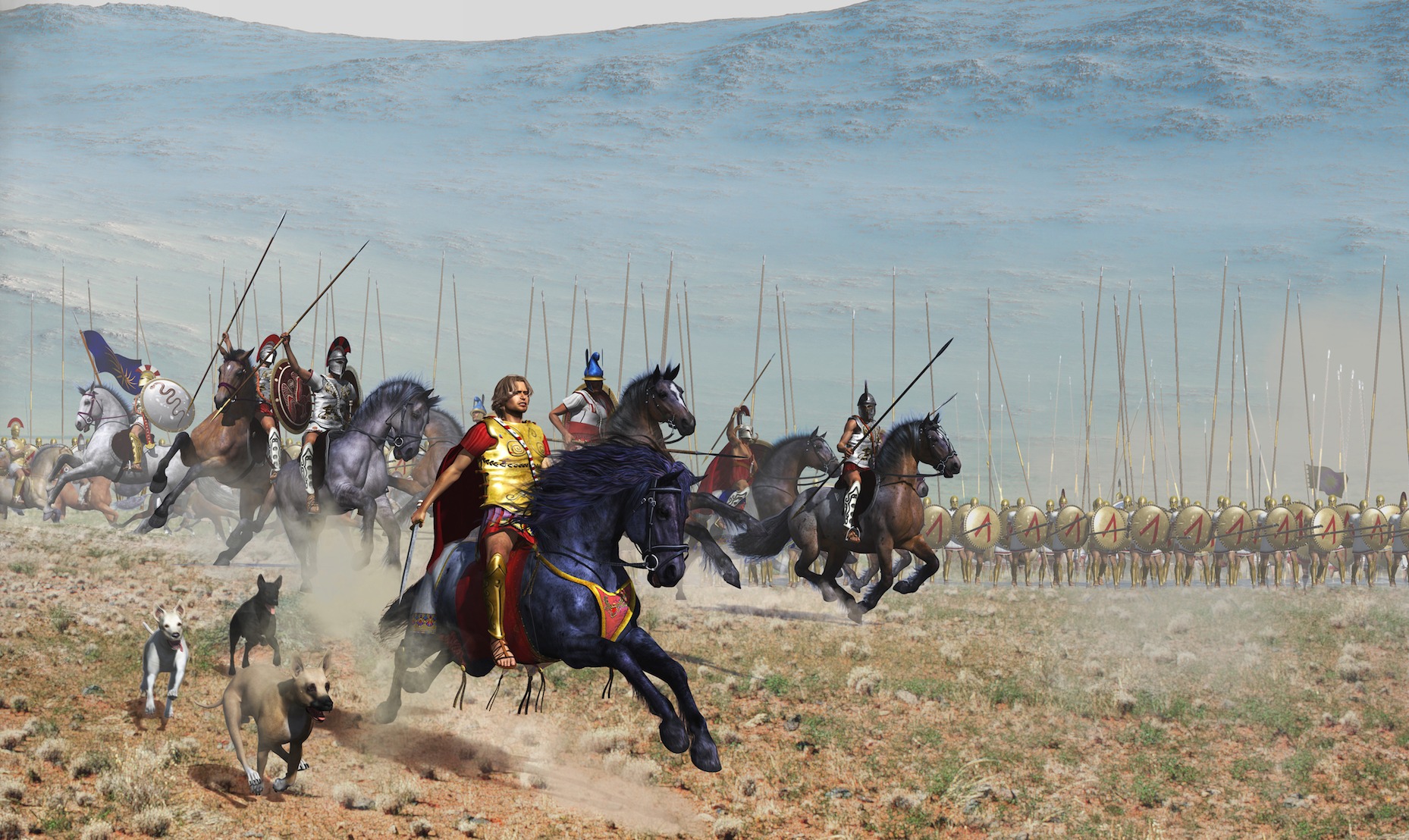
The big difference between our two 3D conceptions was that Gerhard accepted the digital as a stylistic way for his work, whereas from the beginning I only tried to create my mostly figurative content with this 3D paintbox. For me, the digital aspect can be totally lost due to the painterly work that is involved.
Gerhard has “run down” his reputation as an artist over the years. On the one hand, this has to do with the preoccupation with 3D Art – he has repeatedly complained that the gallery owners do not understand anything and also do nothing for him. He then began to market his art on the Internet, which angered the gallery owners and he was removed from their clients bases.
A few years ago he started to create more figurative works, as I had done. I was quite amazed at this step as I saw that it might not be understood by a lot of people in the art scene.
But he blossomed – finally he could leave the emptiness of “Modern Art” behind and only do what was close to him.
And he was a total perfectionist again. By introducing people to his new images, he was astonished at what kind of liberation it triggered in him. Telling and retelling became a passion for him. When I asked him why he stopped doing landscapes that I loved so much personally, he ignored the question.
At the end of last year we talked about maybe doing an exhibition together. I had joined the BBK in Munich and there was the opportunity to use the great “Artist’s Gallery.” The idea was to show our Digital work together with BBK Artists. But nothing came of it. Among the hundreds of Artists of the BBK there were no Digital Artists.
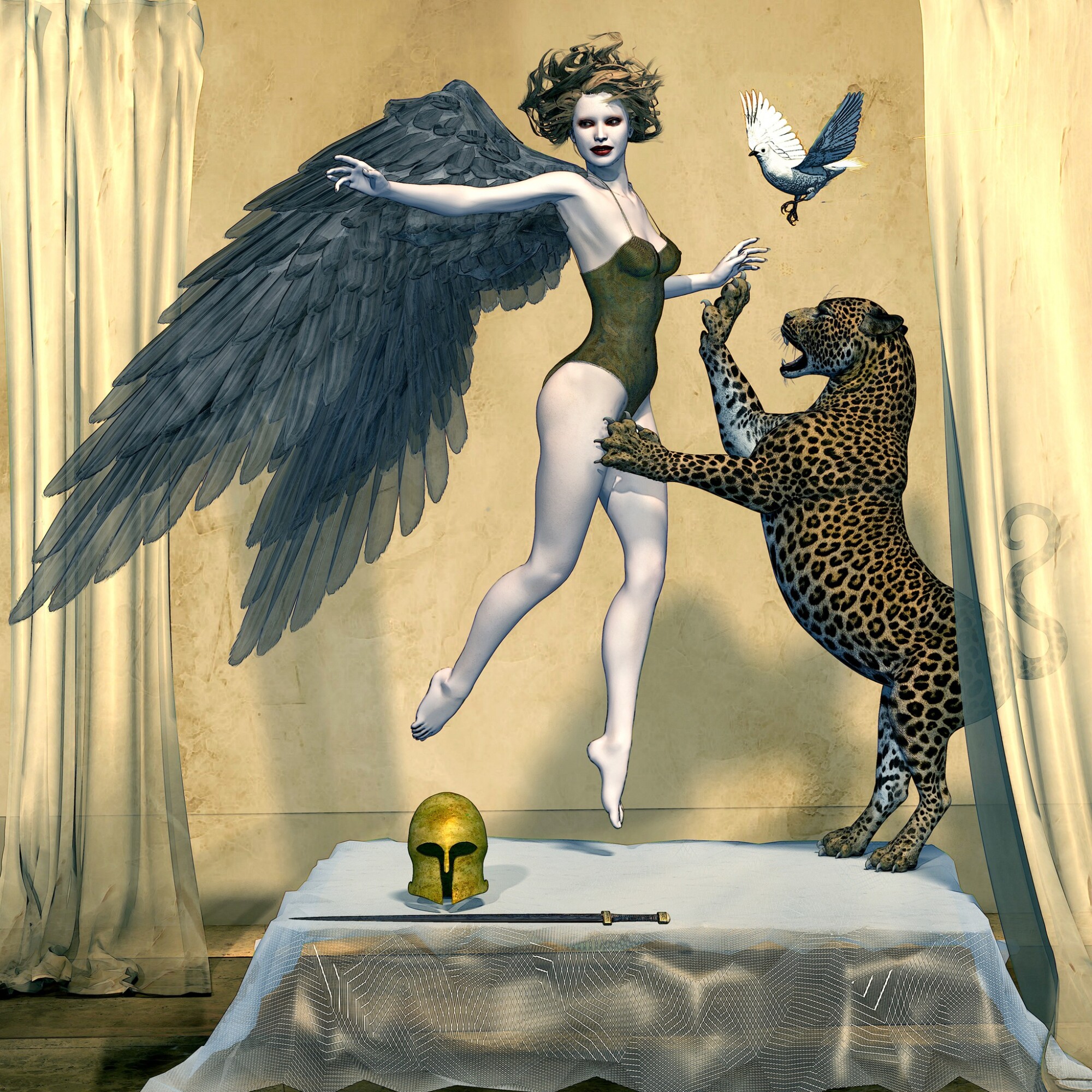
What are some projects you’re most proud of?
There is some truth in the saying by artists: “The last artwork is my most important work,” but…I can surely make a distinction if I want to.
The early Amon Düül posters did get me started in commissioned artwork.
The notorious “Blue Planet” was my first major work and had a strong connection to the time it was created. These were done by airbrush mostly – watercolor and acrylics on board.
The “Omni Covers” and the work for Playboy dominated the 1980s.
After the change to digital, the Triptychon “Potzdamer Platz” were certainly very important in defining what I could do by digital means. It carried further what I tried to express about all things environmental, that peeked through all my early work and the Science Fiction portfolio.
I was even awarded the Bergennale Art Price 2018 for this painting.
The most challenging work since going digital, are the “Alexander” and “Dawn – The Last Generation” paintings, at least for me, because of their sheer size and complexity and time I had spent working on them.
One can easily add the painting “Aquarius,” which is a view back to 1968 and has an autobiographical context.
As a last favorite I would like to mention the hunting Trilogy – “Harvest,” “The Hunter,” and “Escape.” For many years I have been supporting Animal Rights and conservation, that has become a great concern to me in the last years. Many of my pictures show animals to a greater or lesser extent. I am trying to tackle the subject in a way that the viewer is moved, but not shocked. That is not always an easy undertaking.
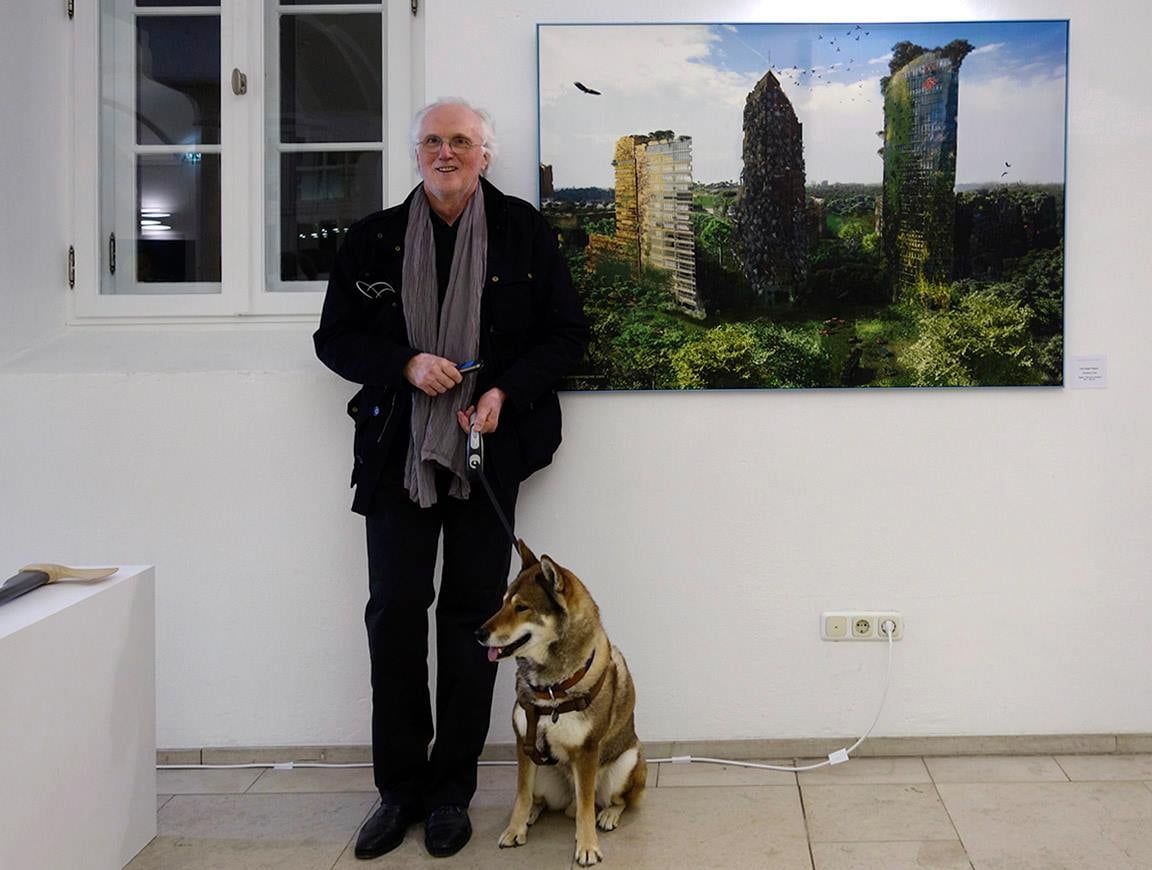
Thank you for taking your time. Last word is yours.
Thanks a lot Klemen for your interest!
I will add a few words about the arts as I have experienced it so far.
When I started out in the 1960th the arts were not dominated by the investment market as it is today. People liked to buy what appealed to them, where they had a spiritual connection or what related to their time. The avantgarde from the beginning of the century was still ruling supreme, abstraction dominated. Photography began having an impact as art. The illustration work I did influenced my work. I like to tell a story . I like to try out the new, without forgetting the history of art. We are in the 21st century and dramatic challenges are facing the arts now. How shall we react to AI, the machine as they like to say? As a digital artist I am nearer to AI, than any traditional artist. I am not worried. I can see the potential. What worries me far more is the influence big money investment has on the artist community. Art has become a commodity in a silly money market for perhaps 100 to 200 artists worldwide. But the multitude of artists can’t live from their art, while collectors reap in millions at auctions, without funneling any money back. That is not a healthy situation. It only helps to create more money for the richest 1%. That is not what art should be doing.
“The Beauty and the Beast is a recurring theme in my work lately. The emphasis is on Love and Cooperation, opposed to Hate and Destruction, that is often in the way of harmony with nature.”
Klemen Breznikar
Headline photo: Jürgen Rogner with his baby son (1976)
Fred Jürgen Rogner Official Website / Facebook / Instagram

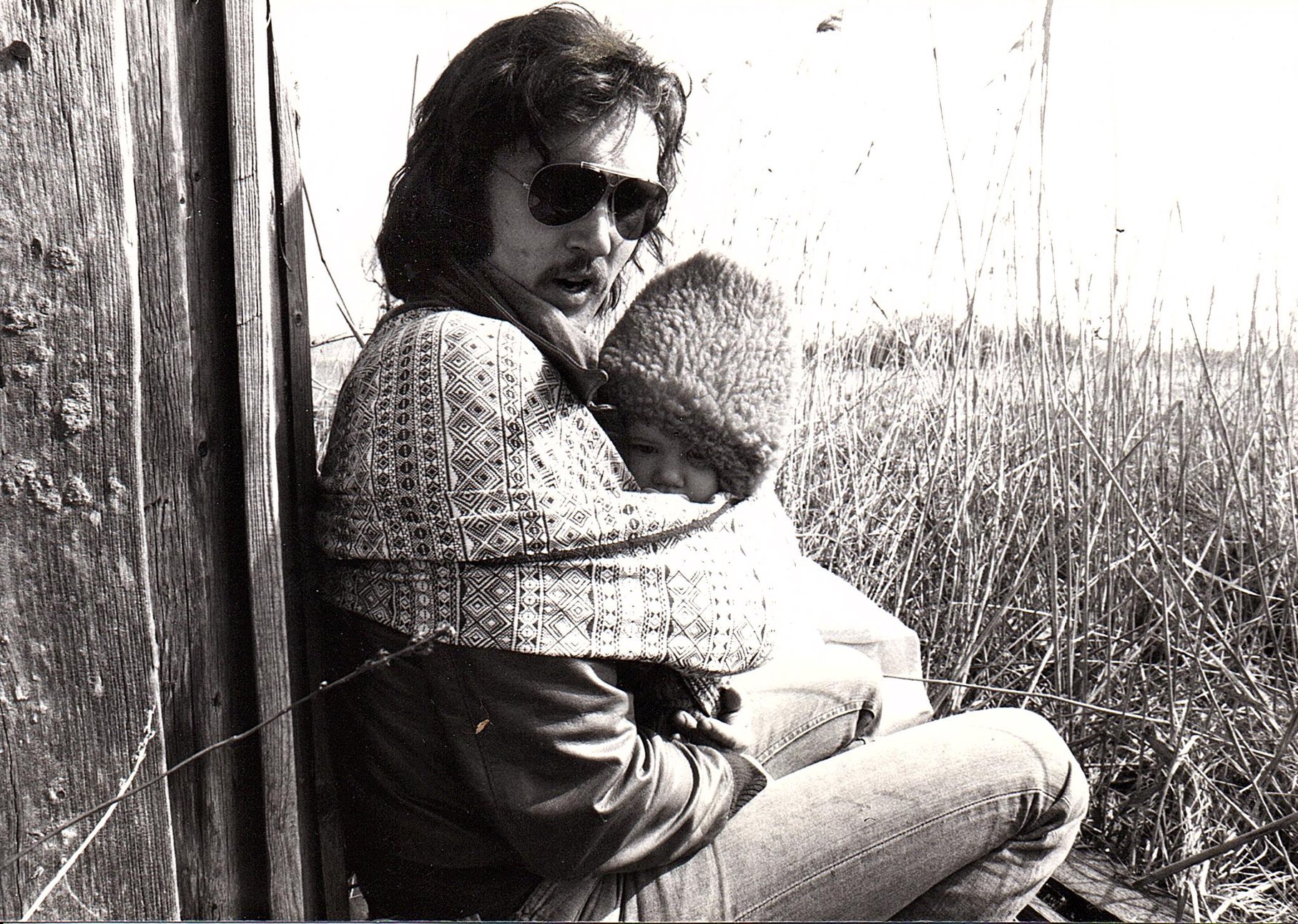
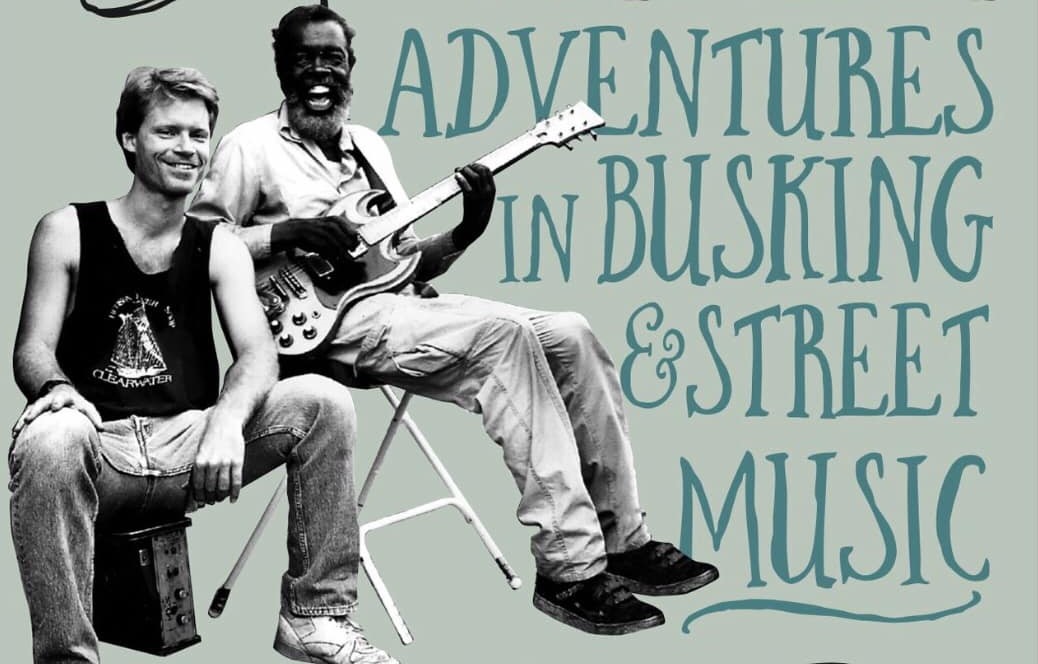
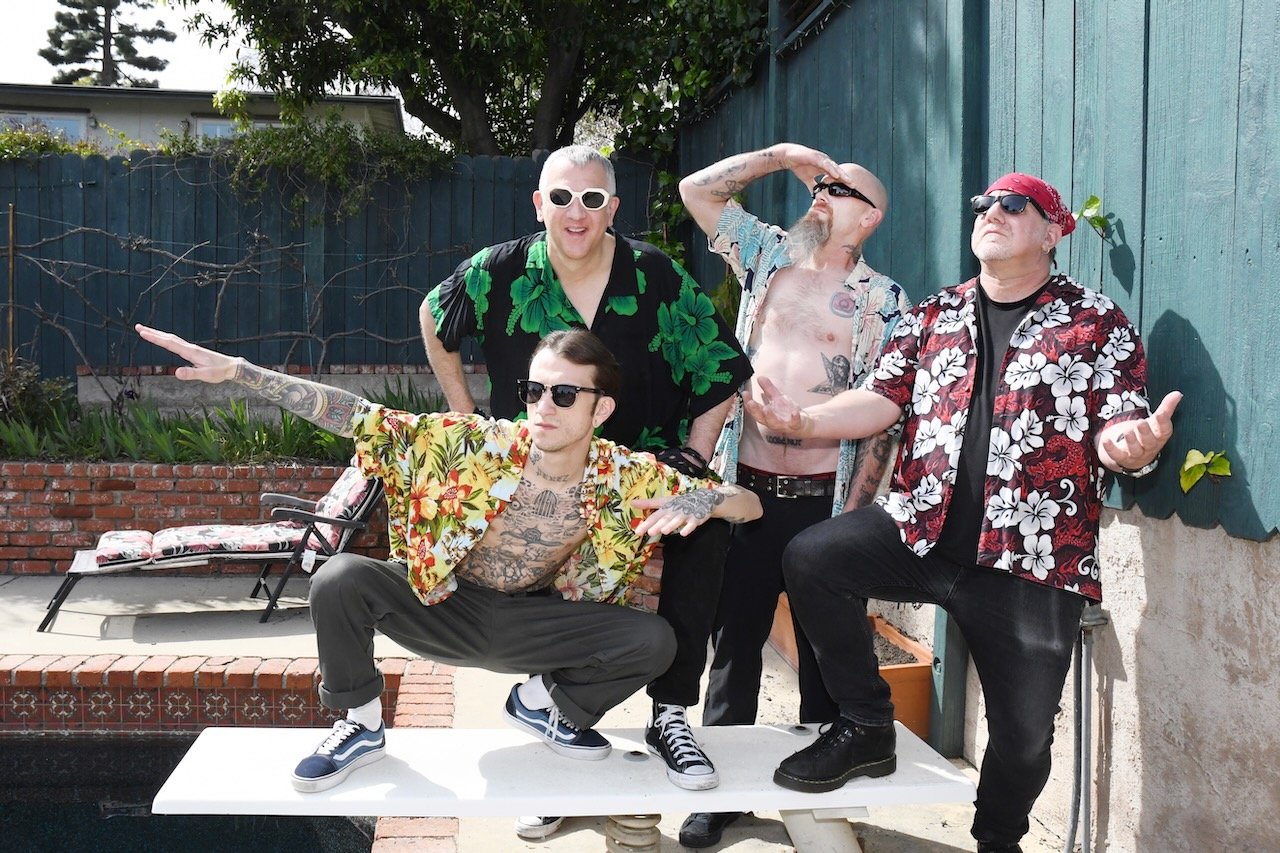
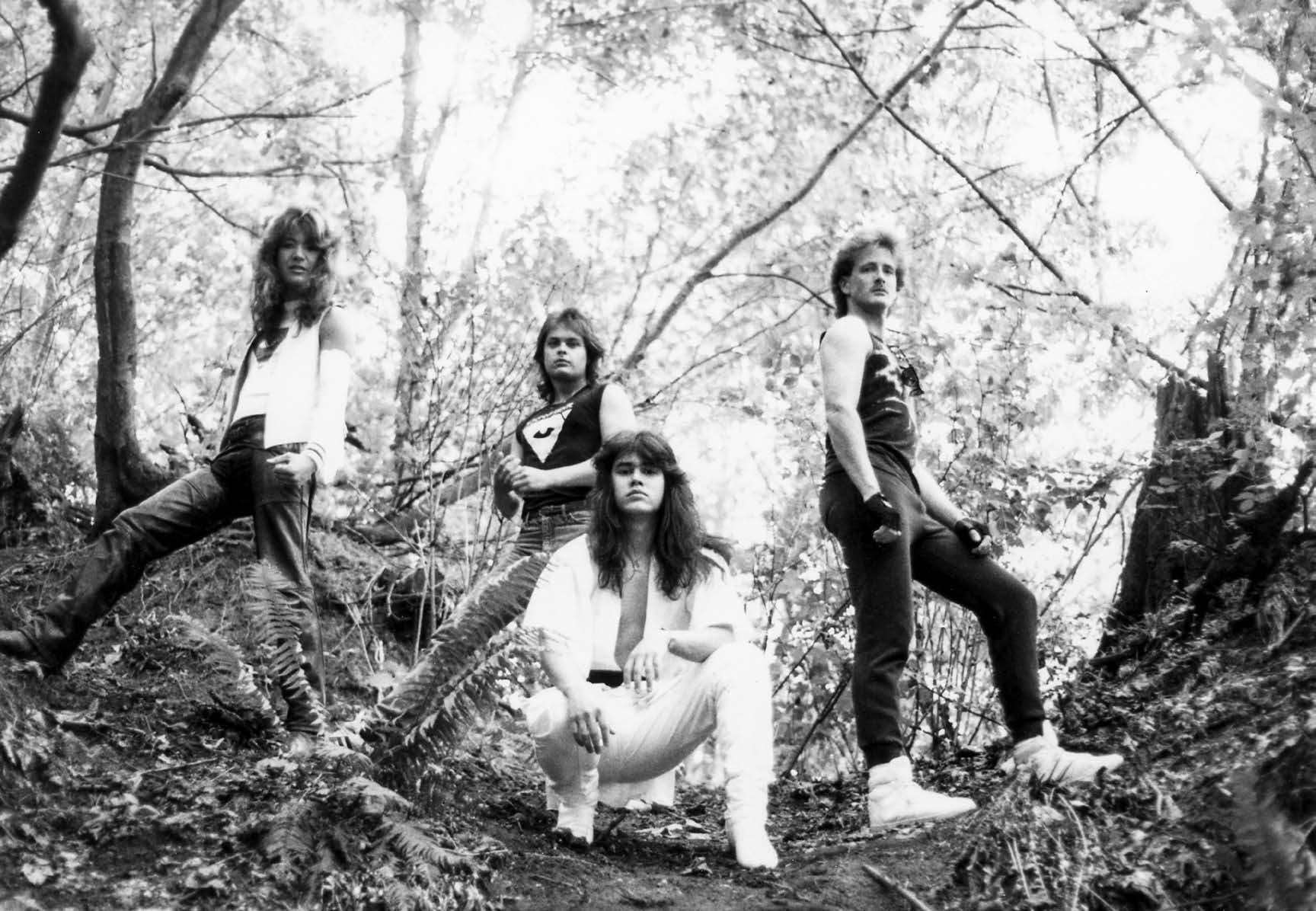
Unidentified man in band photo is Karl-Heinz ‘Kalle’ Hausmann. Think he replaced Falk Rogner for a short while in the Dance of the Lemmings / Carnival in Babylon period. He generated electronic noises in the same manner as FR. Then he vanished never to be heard of again. If memory serves right, he is in the ‘Kronwinkl 13’ jam video on Youtube. I could be wrong, because it could be Falk without a moustache. K-HH is probably pictured in the inner sleeve of Carnival btw. At one point I was able to find online, an electronics and repairs workshop, in Germany, under the name of proprietor Karl-Heinz Hausmann. Possibly that was him. Not sure if it can still be found